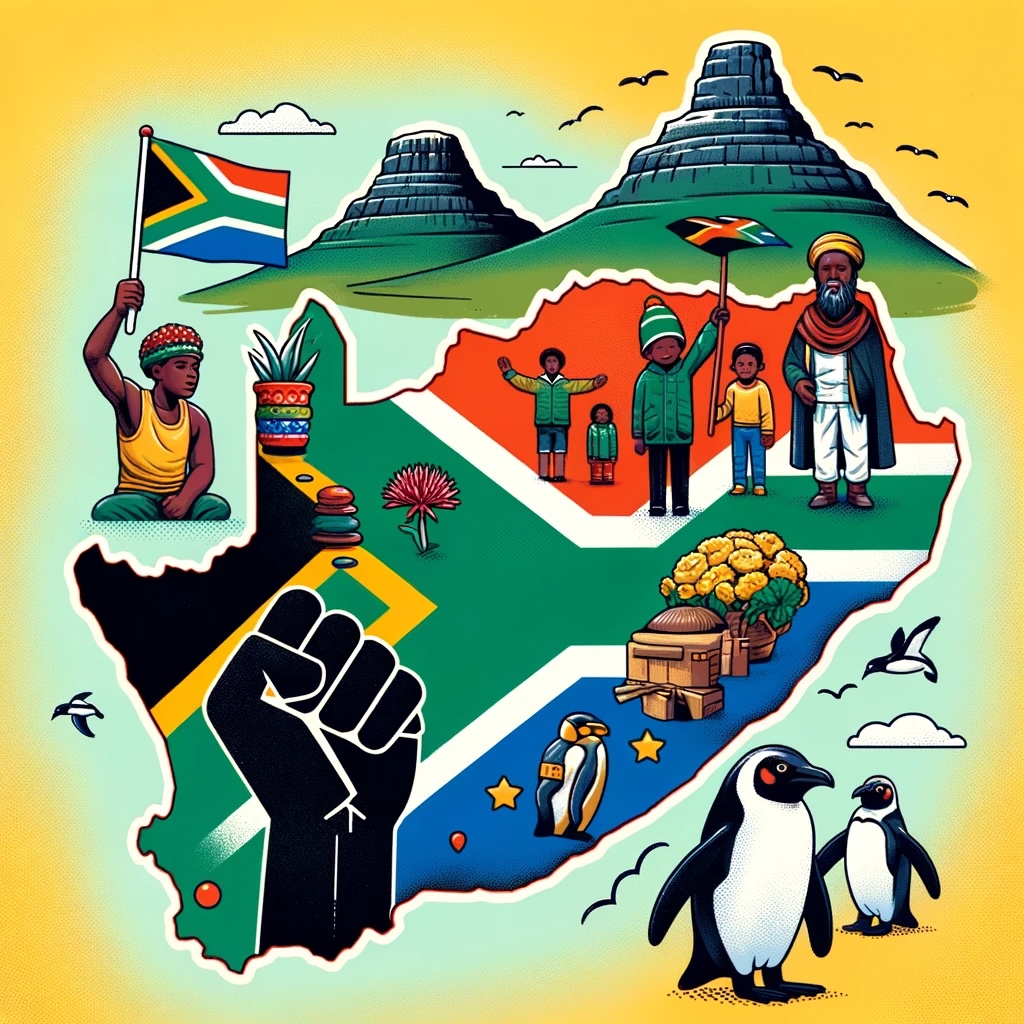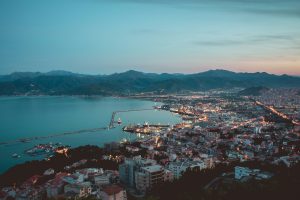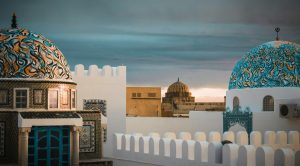When a traveler ponders what South Africa is famous for, images of towering mountains, sprawling savannas, and a tumultuous yet triumphant history often spring to mind.
This colorful nation, a mosaic of cultures, traditions, and histories is a serious tourist hotspot (it’s the 3rd most visited country in Africa) with just under 7 million flocking to see all of the famous landmarks in South Africa, let’s see what all the fuss is about…
Famous Manmade Landmarks in South Africa
South Africa pays homage to an array of stunning manmade landmarks that tell the story of its diverse and complex heritage.
These landmarks, ranging from poignant memorials of historical struggles to marvels of modern architecture, stand as testaments to the ingenuity and resilience of the South African people.
Each famous South African manmade landmark holds a unique place in the fabric of South African history and culture and as always, we will tell you the ins and outs of visiting these wonderful places.
Robben Island
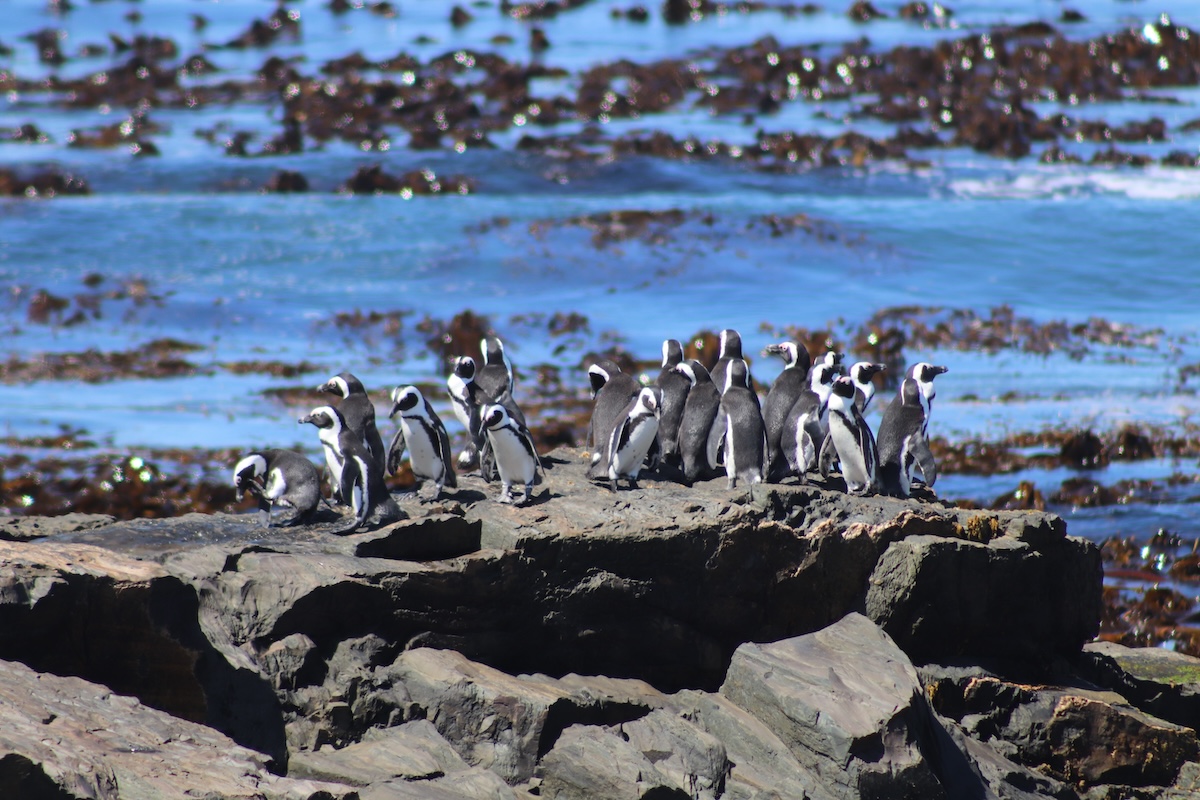
Robben Island, located off the coast of Cape Town, South Africa, is a site of profound historical significance and a poignant reminder of the country’s turbulent past.
This UNESCO World Heritage Site is most famous for its prison, where Nelson Mandela, among other anti-apartheid activists, was incarcerated for 18 of his 27 years in captivity. The island has served various purposes over the years, including as a leper colony, a mental hospital, and a military base, but it is its role in the apartheid era that has etched its name into the annals of history.
Visitors to Robben Island embark on a deeply moving journey, typically starting with a ferry ride from the V&A Waterfront in Cape Town.
The guided tours, often led by former political prisoners, provide an authentic and insightful perspective into the life and struggles of those confined on the island.
The prison tour includes a visit to Mandela’s cell, a small, sparse space that has become a symbol of resilience and hope. The island itself is stark yet serene, with its rugged coastline and diverse wildlife, including a colony of African penguins.
The experience of visiting Robben Island is not just about seeing a historic site; it’s about understanding the depth of human endurance and the spirit of forgiveness and reconciliation that defined South Africa’s transition to democracy.
Know Before You Go:
Best Time to Visit: The weather is more favorable from September to April.
Getting There: Ferries depart from the V&A Waterfront; booking in advance is recommended.
Duration: Tours, including ferry rides, last approximately 3.5 hours.
Tickets: Purchase tickets online from the official website in advance to secure a spot.
Weather: Can be windy and cold; dress in layers and bring a jacket.
Facilities: Basic amenities like restrooms and a small cafe are available.
Accessibility: The ferry and parts of the tour are wheelchair accessible.
Apartheid Museum
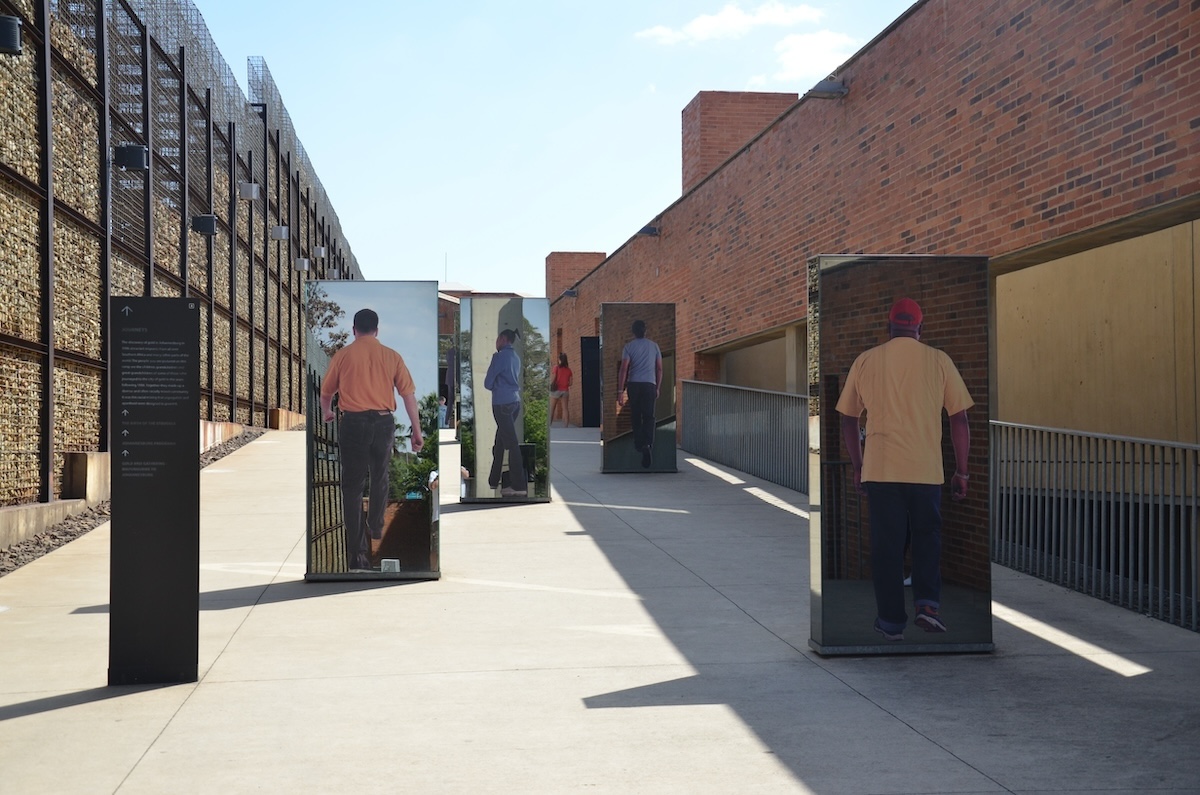
The Apartheid Museum in Johannesburg is not just any old museum; it’s a powerful, emotional journey through South Africa’s apartheid history. Opened in 2001, it has quickly become a must-visit destination for anyone interested in understanding the country’s past and the path to its present democracy.
The museum’s exhibits are a poignant reminder of the racial segregation and oppression that once dominated daily life in South Africa.
Upon entering, visitors are arbitrarily classified as either white or non-white, and their experience through the museum is based on this classification, highlighting the arbitrary nature of apartheid’s racial categorization.
It is designed to be an educational and immersive experience. This is done to simulate, to a limited extent, the experience of apartheid-era racial classification and segregation.
This is not intended to discriminate but rather to provide a powerful and thought-provoking introduction to the museum’s exploration of South Africa’s history of apartheid.
Know Before You Go:
Best Time to Visit: Weekdays are less crowded.
Getting There: Easily accessible by car or taxi from central Johannesburg.
Duration: Allocate at least 2-3 hours for a thorough visit.
Entrance Fee: There is an admission fee of R150.00 for adults and R100.00 for students, pensioners, and children.
Facilities: A gift shop and café are available on-site.
Sensitivity: The content is graphic and emotional; discretion is advised for young children.
Accessibility: The museum is wheelchair accessible.
Photography: Photography is allowed but be respectful of the sensitive nature of the exhibits.
The Cradle of Humankind
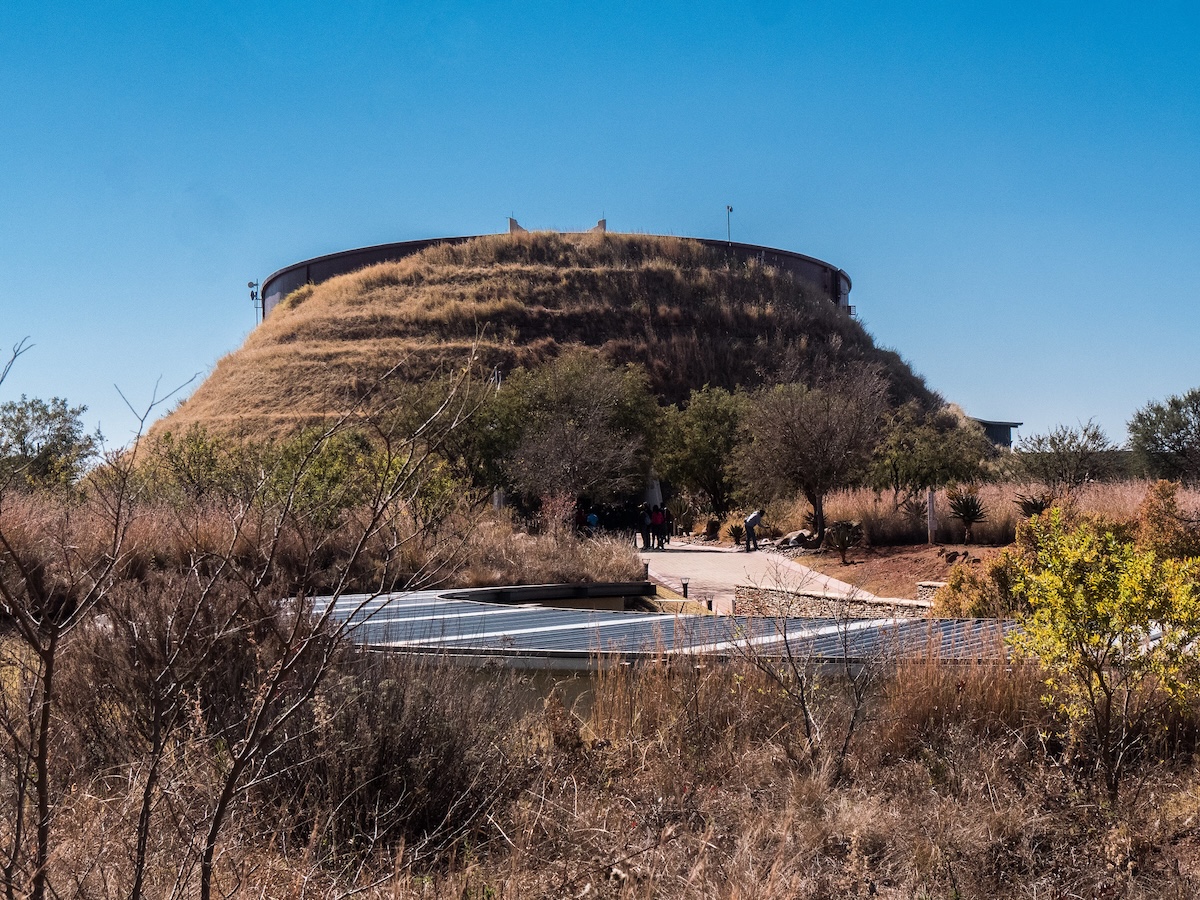
The Cradle of Humankind, located near Johannesburg, South Africa, is a site of extraordinary significance in understanding the history of human evolution.
This UNESCO World Heritage Site, encompassing around 47,000 hectares, is a treasure trove of paleoanthropological discoveries, offering insights into our ancient ancestors and their way of life. The area is renowned for containing some of the world’s richest and most informative hominid fossils, making it a key point of interest for scientists and history enthusiasts alike.
The Maropeng Visitor Centre, designed to resemble an ancient burial mound, serves as the gateway to the Cradle of Humankind. It provides an interactive and educational overview of the evolution of life and the origins of humankind. The nearby Sterkfontein Caves, one of the most important fossil sites in the complex, allows visitors to delve deep into the caves where famous fossils like “Mrs Ples” and “Little Foot” were discovered.
A visit to the Cradle of Humankind is not just about seeing fossils; it’s an opportunity to reflect on what it means to be human and our place in the natural world. The site beautifully combines scientific importance with a sense of wonder, making it a profound and thought-provoking destination and is ideal for families and anyone interested in archaeology and human history.
Know Before You Go:
Best Time to Visit: Open year-round, but spring and autumn offer pleasant weather.
Getting There: Located about an hour’s drive from Johannesburg; accessible by car or tour bus.
Tickets: Purchase tickets for both Maropeng and the Sterkfontein Caves in advance. (R100 for all visitors over the age of six, with free entry for children under six for both).
Duration: Allow half a day to explore both the visitor centre and the caves.
Facilities: Restaurants, gift shops, and restrooms are available at Maropeng.
Cave Tours: Wear comfortable shoes and be prepared for uneven terrain in the caves.
Accessibility: Maropeng is wheelchair friendly, but the Sterkfontein Caves have limited accessibility.
Gold Reef City
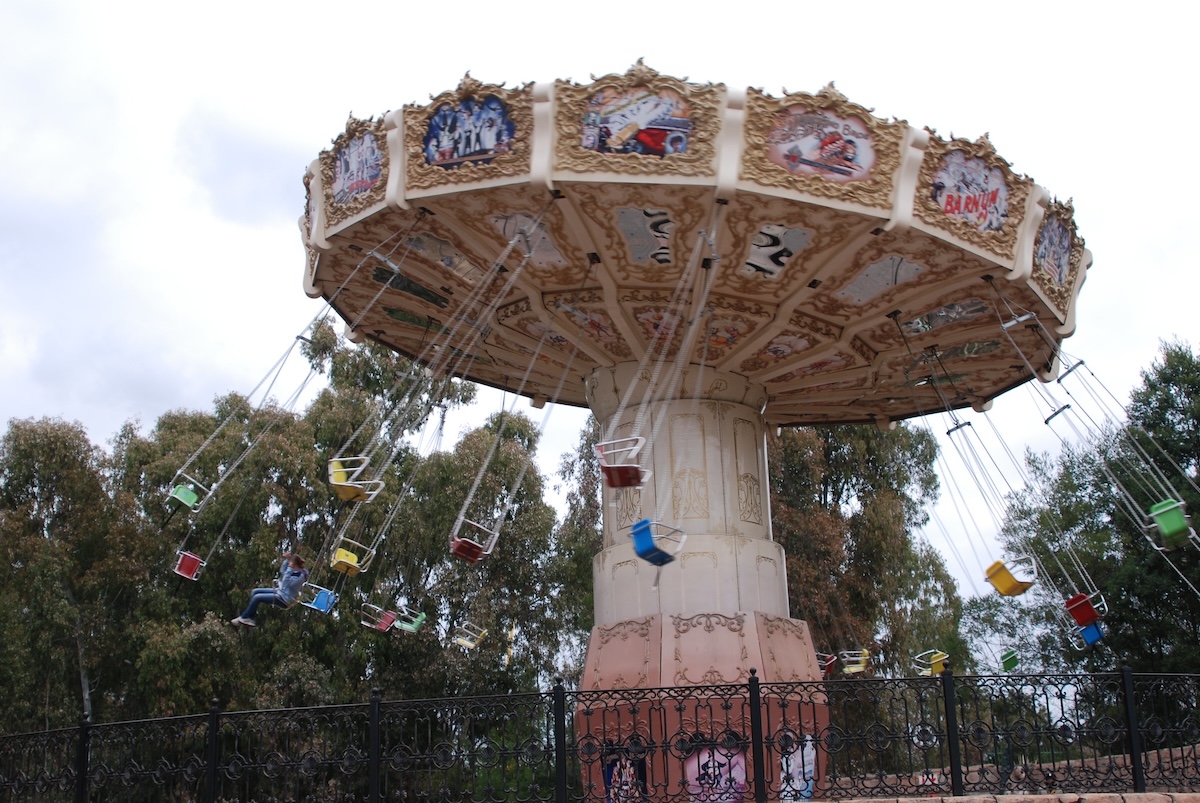
Gold Reef City, situated in Johannesburg, is a vibrant amusement park that offers a unique blend of entertainment and history. Built on an old gold mine, the park is themed around the gold rush that began in Johannesburg in the 1880s.
It’s a place where visitors can experience the thrill of roller coasters and other rides while also getting a taste of Johannesburg’s rich mining history.
The park features an array of attractions including a replica of an old mining town, complete with period houses and a museum displaying mining artifacts.
One of the highlights is the underground mine tour, where visitors can descend into an actual gold mine and learn about the mining process and the lives of the miners. For those seeking more adrenaline-fueled activities, the park offers numerous rides, including the famous Anaconda roller coaster.
Know Before You Go:
Best Time to Visit: Weekdays are less crowded than weekends.
Getting There: Located in the southern part of Johannesburg, accessible by car or taxi.
Tickets: Different ticket options are available; check for combo deals.
Facilities: Restaurants, snack bars, and restrooms throughout the park.
Rides: Range from family-friendly to extreme.
Accessibility: Wheelchair accessibility varies; check specific attractions.
Union Buildings
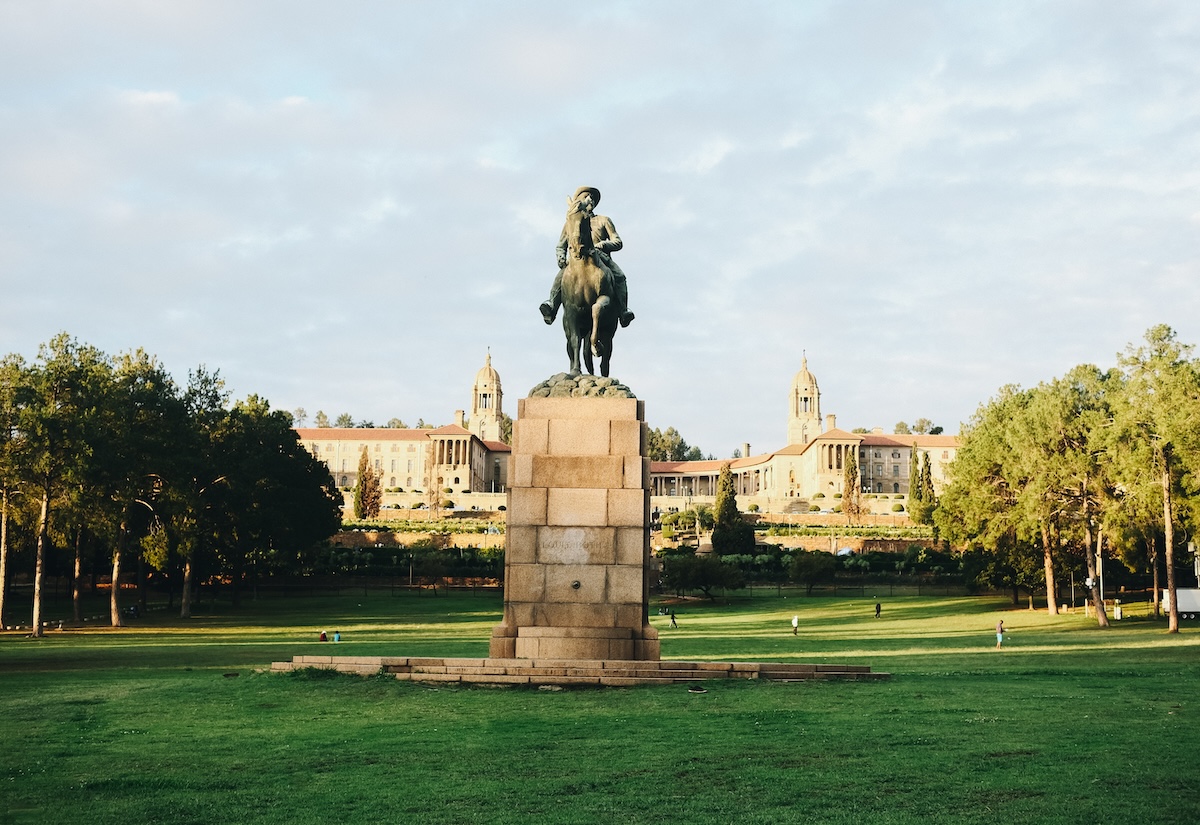
The Union Buildings form the official seat of the South African government and also house the offices of the president. Located in Pretoria, these buildings are a symbol of democracy and unity.
Designed by the architect Sir Herbert Baker, the Union Buildings are a striking example of Edwardian architectural style and are set in beautiful gardens offering panoramic views of the city.
The buildings themselves are not open to the public, but visitors can explore the terraced gardens, which are a popular spot for locals and tourists alike. The gardens are home to various monuments and statues, including a prominent statue of Nelson Mandela, inaugurated in 2013 to commemorate the 20th anniversary of South Africa’s democracy.
Know Before You Go:
Best Time to Visit: Open throughout the year.
Getting There: Located in the city of Pretoria, accessible by car or public transport.
Gardens: Free access to the public.
Photography: Great spot for photography with city views and historical statues.
Accessibility: The gardens and outdoor areas are wheelchair accessible.
Voortrekker Monument
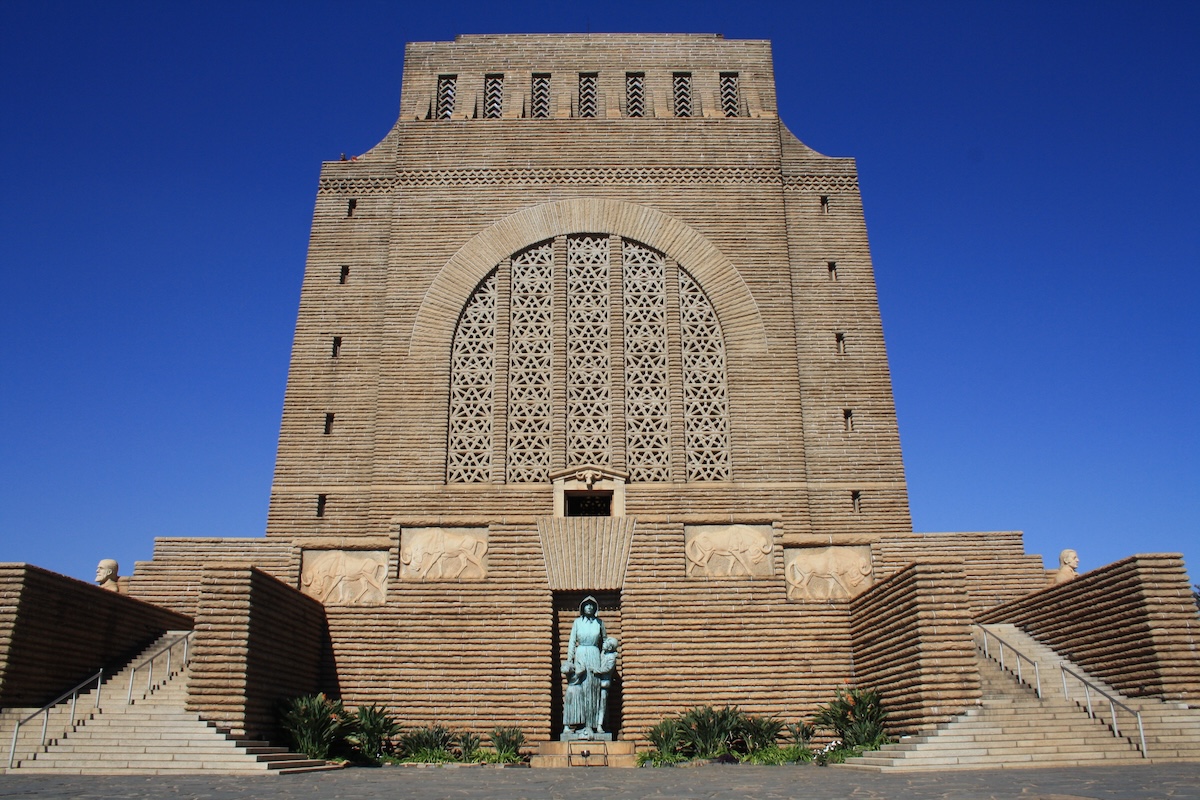
The Voortrekker Monument, located in Pretoria, is a massive granite structure erected to commemorate the Voortrekkers who left the Cape Colony between 1835 and 1854. It’s an iconic symbol of Afrikaner heritage and one of the most visited heritage sites in South Africa. The monument stands atop a hill and can be seen from various points in Pretoria.
Inside, visitors can explore the historical museum that narrates the story of the Great Trek through exhibitions and artifacts. The cenotaph hall at the center of the monument is particularly striking, with its massive marble frieze depicting the Voortrekker journey. The site also includes an amphitheater and a nature reserve.
Know Before You Go:
Best Time to Visit: Open year-round, but less crowded during weekdays.
Getting There: Situated in Pretoria, accessible by car or public transport.
Entrance Fee: The entrance fee for the Voortrekker Monument varies depending on the category of visitor. For SADC countries and local visitors, the fees are as follows:
- Adults: ZAR 150
- Children: (Age 6-18): ZAR 50
- Pensioner and Students: ZAR 75
For international visitors, the fees are the same:
- Adults: ZAR 150
- Children (Age 6-18): ZAR 50
Facilities: A restaurant and gift shop are available on-site.
Accessibility: The main monument and museum are wheelchair accessible.
Constitution Hill
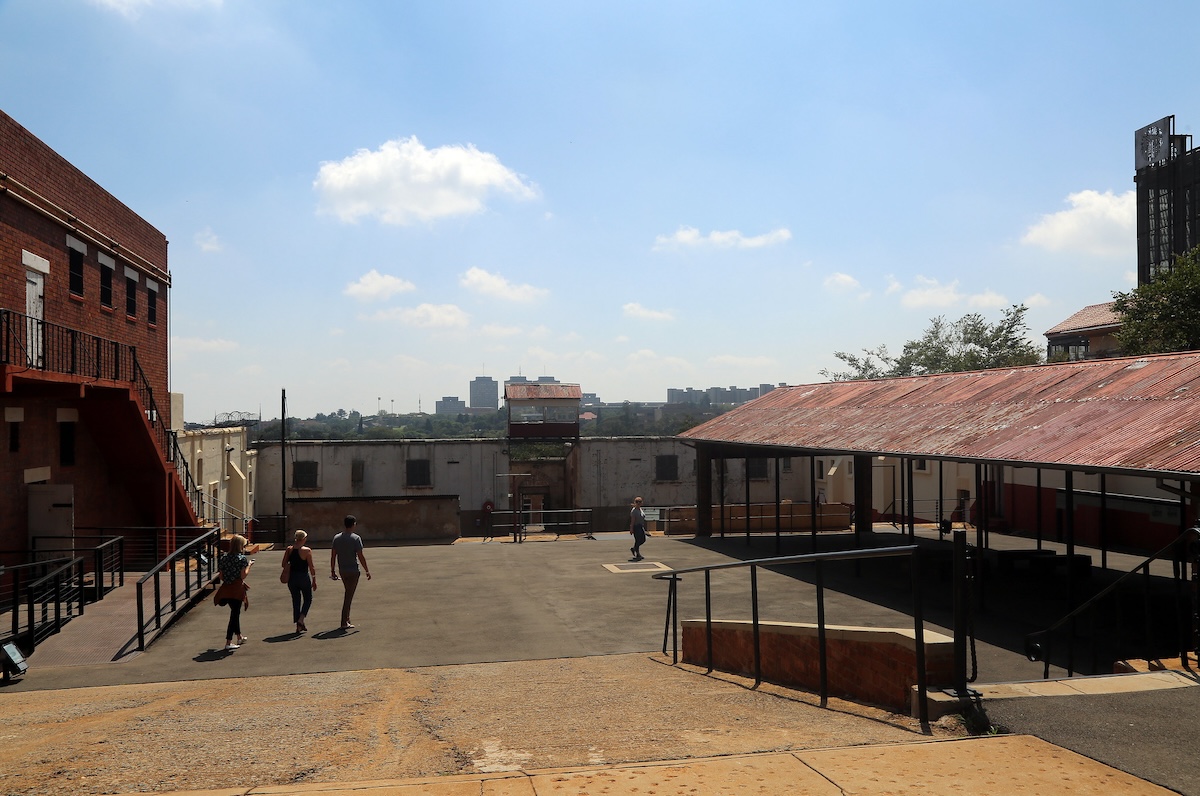
Constitution Hill in Johannesburg is a former prison complex that now houses the Constitutional Court of South Africa. This site is a powerful symbol of South Africa’s journey from apartheid to democracy. The complex has a rich history, having detained famous leaders like Nelson Mandela and Mahatma Gandhi.
Today, Constitution Hill is a major tourist attraction and a site of conscience, offering guided tours that provide insights into its history as a detention center.
The Old Fort, Women’s Jail, and Number Four Jail highlight the brutal treatment of prisoners under apartheid. The Constitutional Court, integrated into the site, is an architectural masterpiece symbolizing transparency and justice.
Know Before You Go:
Best Time to Visit: Open throughout the year, but check for special events.
Getting There: Located in the heart of Johannesburg, accessible by car or public transport.
Tickets: There are several tour options available, including highlights tours, full tours, night tours, and more. The prices range from R45 to R100. It’s important to note that these prices are subject to change, so it’s a good idea to check the latest information before planning your visit.
For further details, you can refer to Constitution Hill’s official website here and the ticket booking page on Webtickets here.
Facilities: Café and bookstore on-site.
Accessibility: The site and court are wheelchair accessible.
Castle of Good Hope
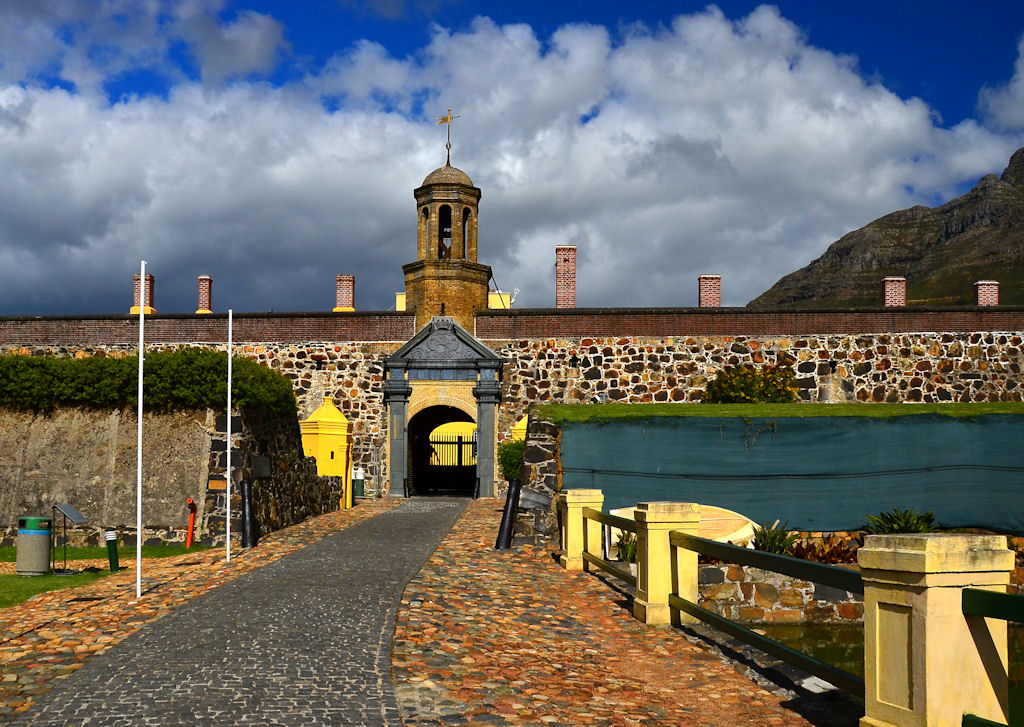
The Castle of Good Hope in Cape Town is a bastion fort and the oldest colonial building in South Africa. Built by the Dutch East India Company in the 17th century, it stands as a monument to colonial occupation and has played various roles throughout history, from a fortification to a prison. Today, it serves as a showcase of Cape Town’s military and cultural history.
Visitors to the Castle can explore its historic walls, which form a pentagonal fortress with bastions at each corner. Inside, you’ll find the William Fehr Collection, exhibiting historical paintings and decorative arts, and the Castle Military Museum, which provides insights into Cape Town’s military past.
The Key Ceremony, performed on weekdays, reenacts the unlocking of the Castle, and the cannon firing is a highlight not to be missed.
Know Before You Go:
Best Time to Visit: Open all year, with fewer crowds outside holiday periods.
Getting There: Centrally located in Cape Town, easily accessible by car or public transport.
Entrance Fee:
- Adults: R50
- South African Pensioners: R25
- Children: (between the ages of 5 and 16): R25
- Booked School Groups: R8 per person
Facilities: Gift shop and café on site.
Guided Tours: Available and recommended for a deeper historical insight.
Accessibility: Most areas are wheelchair accessible.
District Six Museum
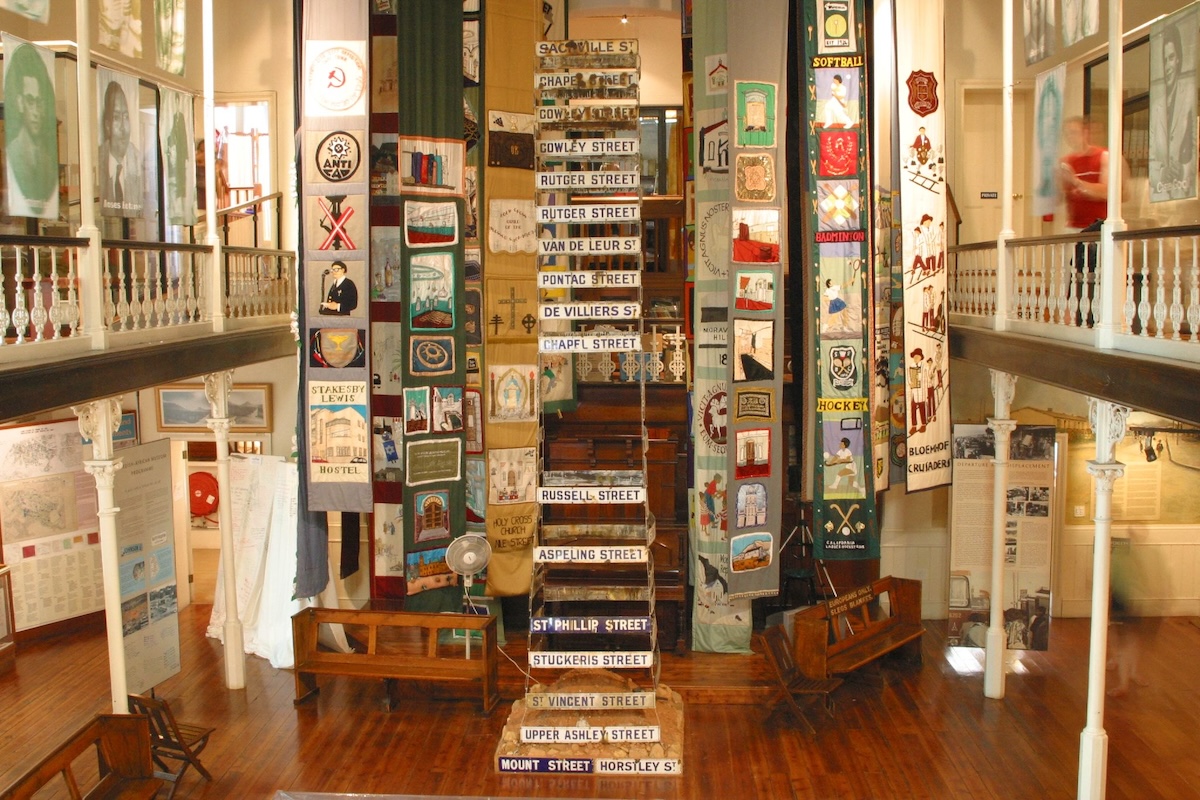
The District Six Museum in Cape Town is a deeply moving tribute to the vibrant community that was destroyed during the apartheid era.
District Six was a mixed community of freed slaves, immigrants, merchants, and artisans. In 1966, it was declared a whites-only area and over 60,000 residents were forcibly removed. The museum stands as a memorial to the spirit of this community and the injustices they suffered.
The museum’s exhibits include street signs, photographs, paintings, and personal narratives, which together tell the story of the neighborhood and its people. Visitors can walk on a floor map of the district, which helps to convey the scale of the displacement. The museum is not just a place of remembrance but also a site of reconciliation and healing.
Know Before You Go:
Best Time to Visit: Open throughout the year, quieter during weekday mornings.
Getting There: Located in central Cape Town, accessible by car or public transport.
Entrance Fee: Entry is by donation.
Facilities: Small bookstore and coffee shop available.
Accessibility: The museum is wheelchair accessible.
Hector Pieterson Museum
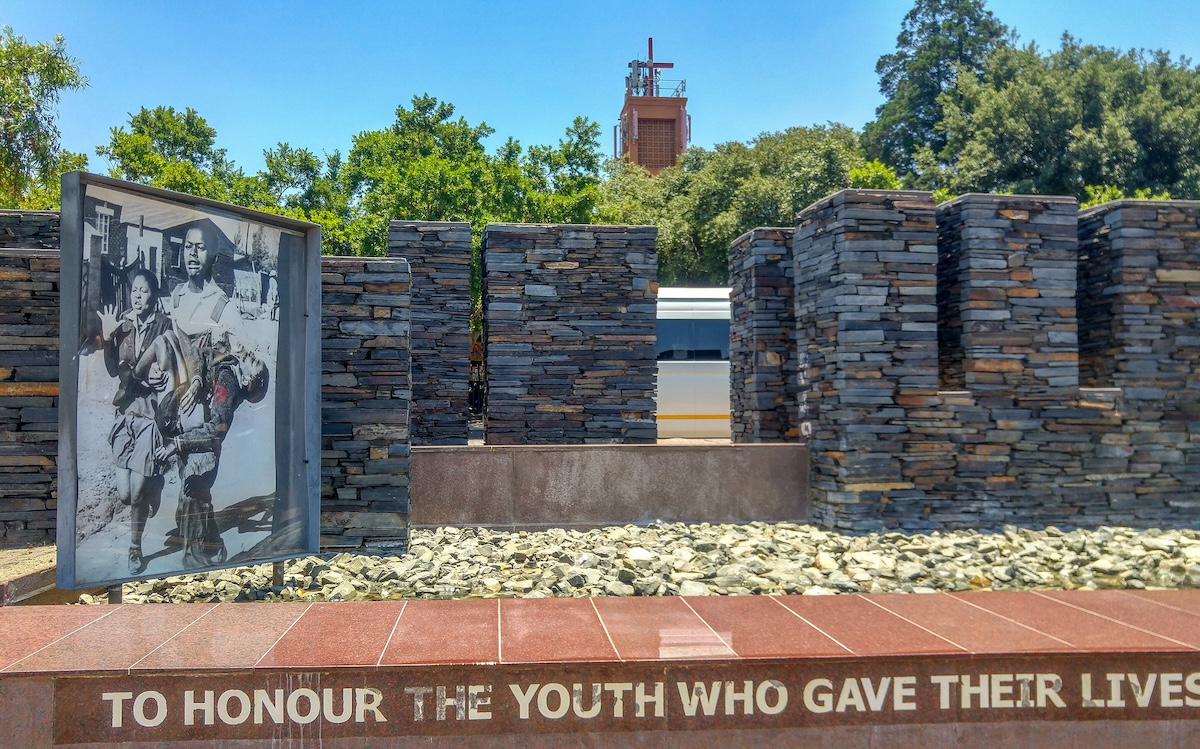
The Hector Pieterson Museum, located in Soweto, Johannesburg, is named after a young boy who was one of the first casualties of the Soweto Uprising in 1976. This museum is dedicated to preserving the memory of the anti-apartheid movement and the struggle for freedom and equality in South Africa. It’s located just a few blocks from where Hector Pieterson was shot, making its presence in the community deeply significant.
The museum’s exhibits include photographs, video footage, and witness accounts, providing a poignant and immersive experience. The famous photograph of Hector Pieterson, which became a symbol of the struggle, is a central feature. The museum not only commemorates those who lost their lives but also educates visitors about the resilience and courage of the youth who stood against apartheid.
Know Before You Go:
Best Time to Visit: Open year-round, but less busy on weekdays.
Getting There: Located in Soweto, accessible by car or guided tour.
Entrance Fee: The entrance fee for the Hector Pieterson Museum in Johannesburg, as of 2024, is R50 for international visitors, R30 for students, and R15 for children. There is no charge for children under 6 years old.
Facilities: Restrooms and a small souvenir shop are available.
Accessibility: The museum is accessible for wheelchair users.
Nelson Mandela Square
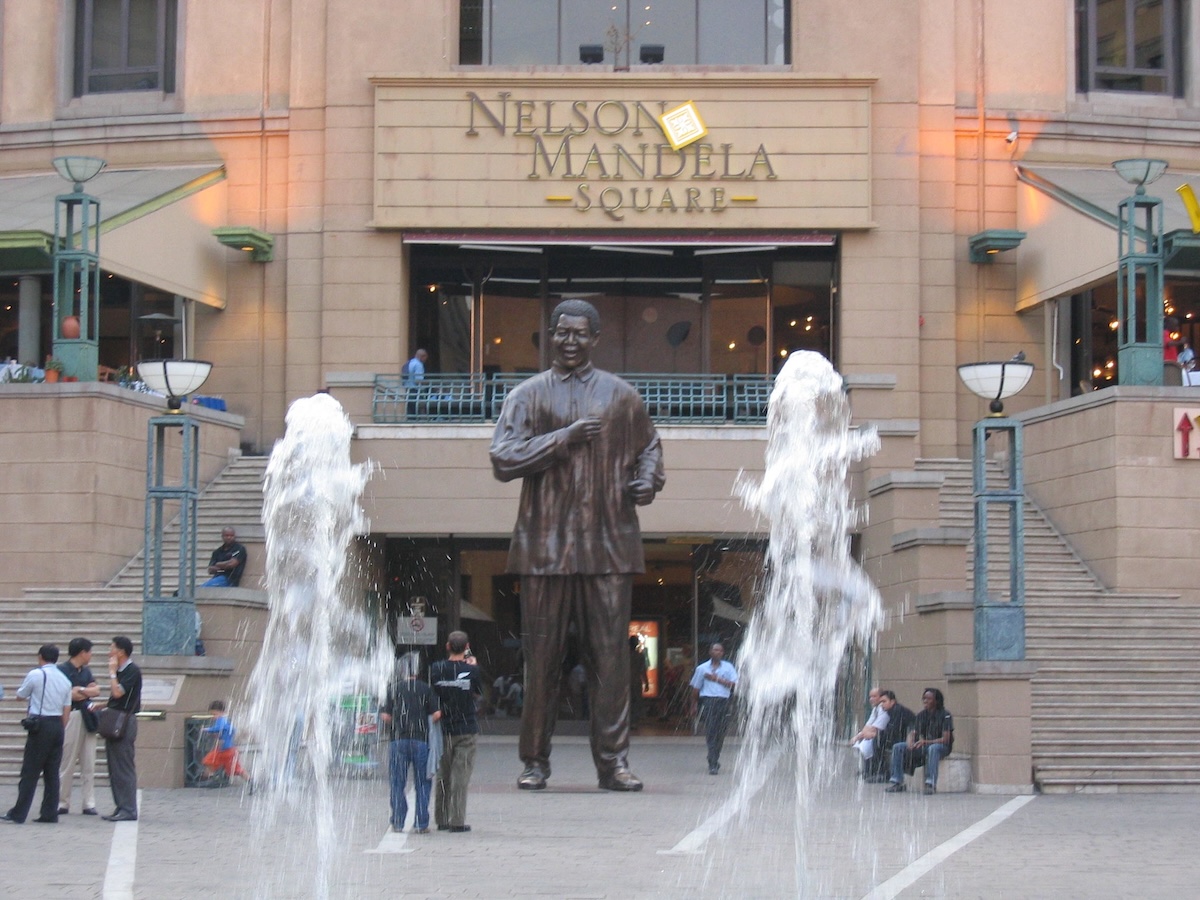
Nelson Mandela Square, located in the heart of Sandton, Johannesburg, is a bustling hub of activity and a tribute to South Africa’s most beloved leader, Nelson Mandela.
Dominated by a towering, six-meter-tall statue of Mandela, the square is a popular meeting point for both locals and tourists. The statue, with Mandela’s arms outstretched, symbolizes unity, forgiveness and reconciliation.
The square is surrounded by a variety of upscale shops, restaurants, and cafes, making it a perfect spot for dining and shopping. It’s adjacent to the Sandton City shopping centre, one of Africa’s most prestigious shopping destinations. The atmosphere in Nelson Mandela Square is vibrant and lively, often hosting live music, art exhibitions, and other cultural events, making it more than just a shopping destination but a place to experience the pulse of Johannesburg.
Know Before You Go:
Best Time to Visit: Enjoyable year-round; evenings are particularly lively.
Getting There: Easily accessible in the Sandton district, with ample parking and good public transport links.
Facilities: Wide range of dining and shopping options, as well as clean public restrooms.
Activities: Check for scheduled events and cultural performances.
Accessibility: The area is wheelchair friendly with smooth pathways.
Soccer City (FNB Stadium)
One of the most famous landmarks commemorating the 2010 FIFA World Cup (which also hosted the final) is the Soccer City Stadium, officially known as FNB Stadium and locally known as “Bafana Bafana” located in Johannesburg.
It’s the largest stadium in South Africa and hosted both the opening match and the final of the 2010 World Cup. The stadium’s design was inspired by African pottery, and its exterior is clad in a mosaic of fire and earth colors, symbolizing the gathering of different cultures in South Africa.
The stadium is not just a sports venue but also a site of historical significance. It was here that Nelson Mandela made his first public speech in Johannesburg after his release from prison in 1990, and where a memorial service was held for him in 2013.
In addition to hosting national team matches, the stadium is used for a variety of sporting events, including international football matches.
It is also the home stadium for Kaizer Chiefs Football Club, one of the country’s most popular and successful football clubs.
Know Before You Go:
Best Time to Visit: The stadium hosts various events throughout the year.
Getting There: Located in the Nasrec area of Johannesburg, accessible by car or public transport.
Tours: Stadium tours are available, offering a behind-the-scenes look and traveling soccer fans who want to see The Chiefs in action can check out their various available tickets on their official site.
Facilities: Restaurants, shops, and restrooms are available during events.
Events: Check the stadium’s schedule for upcoming matches or events.
Accessibility: The stadium is equipped to accommodate visitors with disabilities.
Durban Botanic Gardens
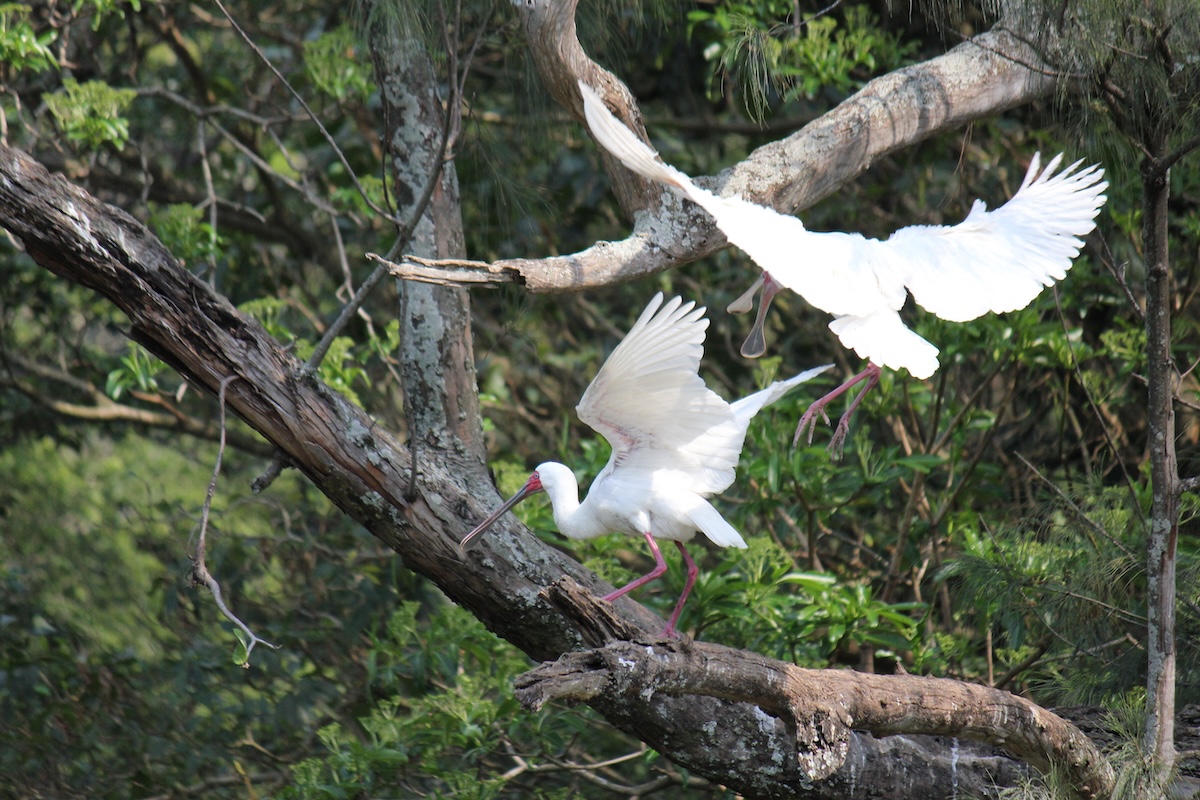
The Durban Botanic Gardens, established in 1849, are Africa’s oldest surviving botanic gardens and a haven of tranquillity in the bustling city of Durban.
These gardens are renowned for their extensive collection of both African and global plant species, including a magnificent orchid house and a rare collection of cycads. The gardens provide a lush, green space for relaxation and education in the heart of the city.
Visitors can enjoy leisurely walks along its well-maintained paths, picnics on its manicured lawns, and frequent concerts and cultural events held in the gardens. The gardens are not just about flora; they are also a habitat for diverse birdlife, making them a favorite spot for birdwatchers.
Know Before You Go:
Best Time to Visit: Open throughout the year; spring and summer are particularly beautiful with blooming flowers.
Getting There: Located near the city center of Durban, easily accessible by car or public transport.
Entrance Fee: Entry is free, but donations are appreciated.
Facilities: Café on-site and areas designated for picnics.
Events: Check for music concerts and seasonal events.
Accessibility: Most paths are wheelchair accessible.
Bo-Kaap
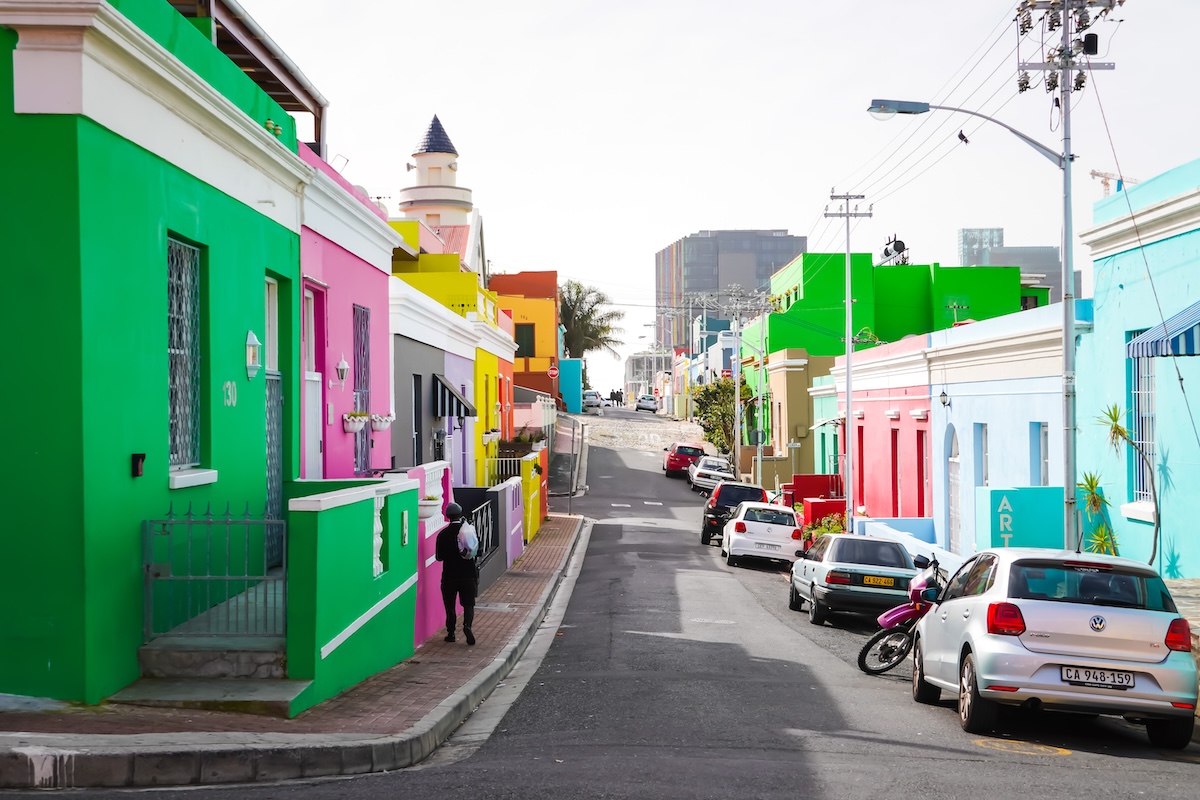
Bo-Kaap, formerly known as the Malay Quarter, is one of the most picturesque and historically significant areas of Cape Town. Famous for its brightly-colored houses and cobbled streets, Bo-Kaap is a vibrant and culturally rich area that reflects the diversity of Cape Town.
The area is steeped in history, initially home to slaves brought to South Africa by the Dutch in the 16th and 17th centuries.
A walk through Bo-Kaap is like stepping into a kaleidoscope of color, with the brightly painted houses providing a stunning contrast against the backdrop of Table Mountain.
The area is also known for its distinctive Cape Malay culture, with its roots in Indonesian, Malaysian, African, and various other cultures. The Bo-Kaap Museum and the area’s many mosques, including the historic Auwal Mosque, offer insights into the community’s heritage.
Know Before You Go:
Best Time to Visit: Lovely all year; visit during daylight hours for the best photographic light.
Getting There: Located on the slopes of Signal Hill, within walking distance from Cape Town city center.
Photography: Ideal for vibrant street photography, but always ask before photographing residents.
Facilities: Several cafes and restaurants serving traditional Cape Malay cuisine.
Accessibility: Steep and cobbled streets might be challenging for wheelchair users.
Isandlwana Battlefield
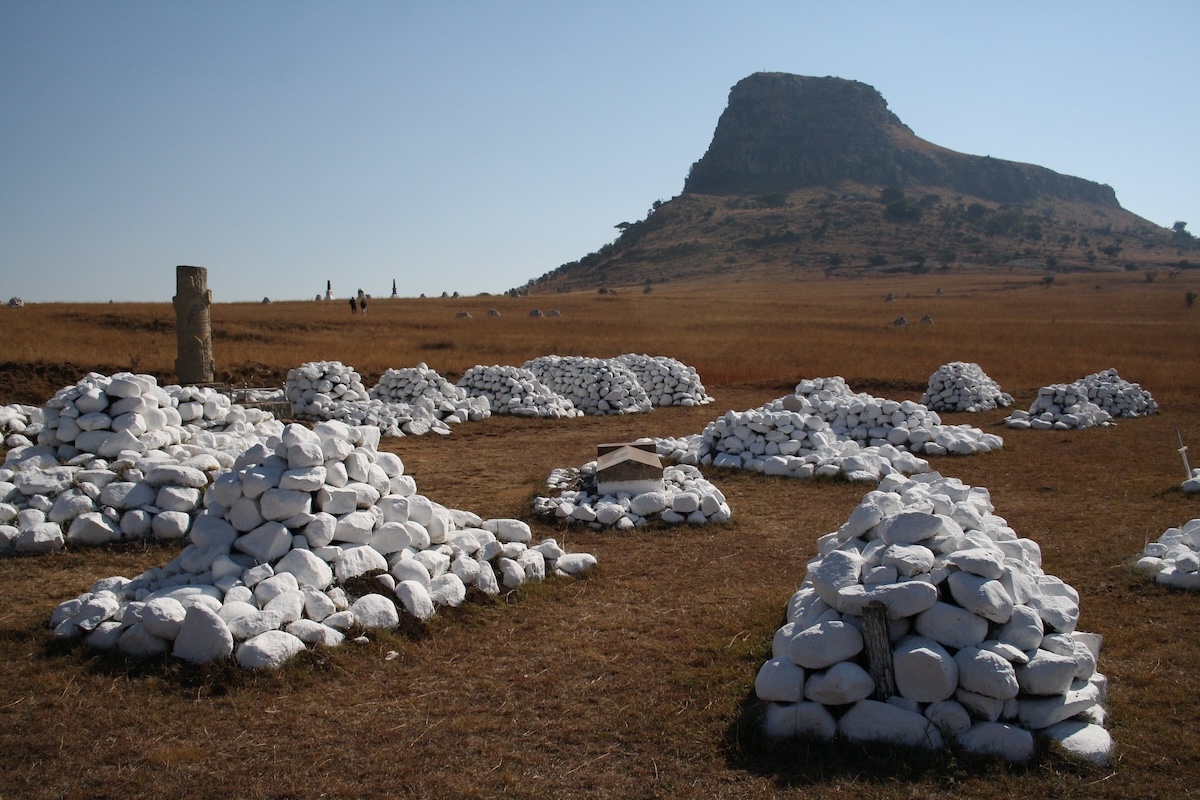
Isandlwana Battlefield in KwaZulu-Natal is a site of profound historical importance in South Africa. It was here that the famous Battle of Isandlwana took place on January 22, 1879, when Zulu warriors achieved a remarkable victory against British forces. The battlefield is set in a remote and hauntingly beautiful landscape, with the Isandlwana hill dominating the scenery.
Visitors to the site can take guided tours, which offer insightful narratives about the battle, detailing the strategies, heroism, and tragedies that occurred.
The tours often include visits to various points on the battlefield, the mass graves, and memorials. The experience is both educational and emotional, providing a deep understanding of a significant event in South African history.
Know Before You Go:
Best Time to Visit: Open year-round; the weather is milder during spring and autumn.
Getting There: Located in rural KwaZulu-Natal, best accessed by car or guided tour.
Guided Tours: Highly recommended for a comprehensive understanding of the battle’s history.
Facilities: Limited facilities; it’s advisable to bring water and snacks.
Accessibility: The terrain can be challenging; accessibility is limited.
Soweto
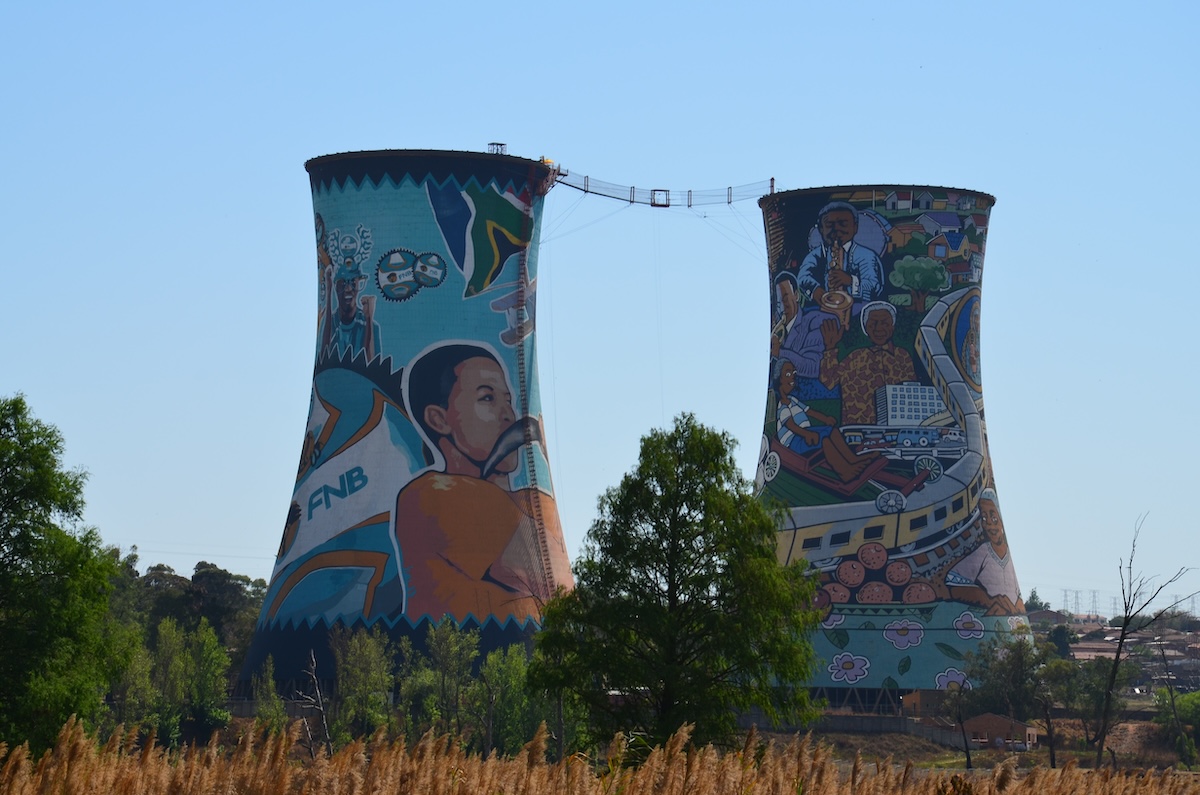
Soweto (South Western Townships) in Johannesburg is an urban area rich in history and culture, known for its pivotal role in the struggle against apartheid. It was in Soweto that the 1976 student uprising took place, a significant event in the fight for freedom. Today, Soweto is a lively, vibrant area, reflecting the spirit and resilience of its community.
Visitors to Soweto can explore the Hector Pieterson Museum and Memorial, visit Nelson Mandela’s former home, now the Mandela House Museum, and experience the bustling Vilakazi Street, the only street in the world to have housed two Nobel Peace Prize winners (Nelson Mandela and Desmond Tutu). Guided tours, often led by residents, provide valuable insights into Soweto’s history and contemporary life.
Know Before You Go:
Best Time to Visit: Accessible year-round; weekends are particularly lively.
Getting There: Easily accessible from Johannesburg by car or guided tour.
Tours: Guided tours are recommended for a deeper understanding of the area’s history.
Natural Landmarks in South Africa
South Africa’s natural landmarks are a testament to the country’s status as a world-class destination for nature lovers and adventure seekers alike.
Table Mountain
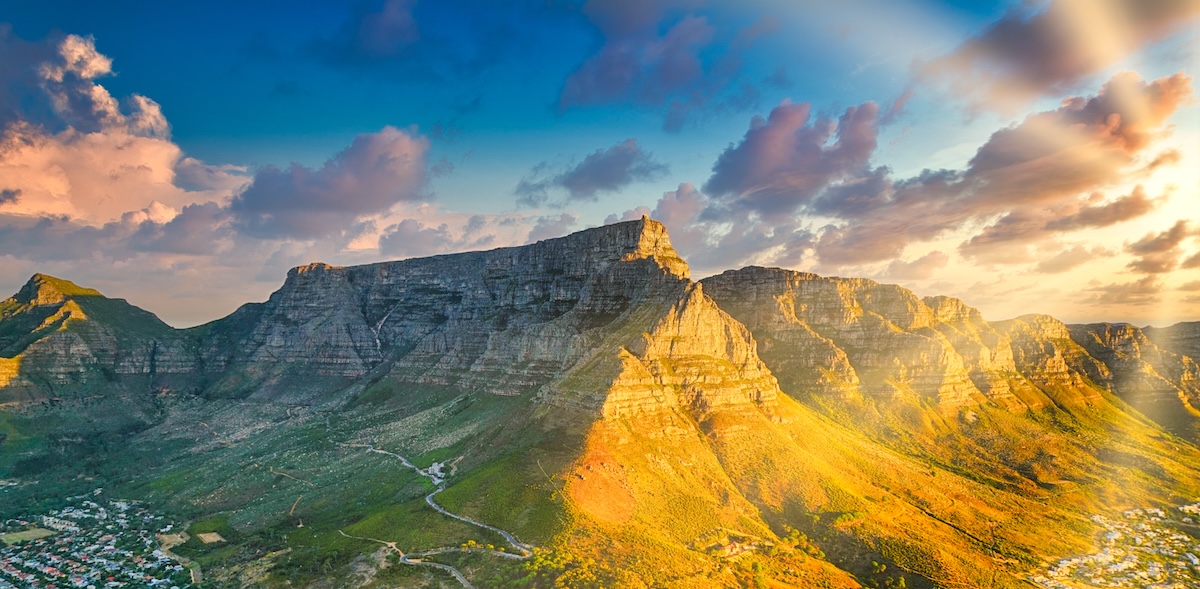
Table Mountain, a natural wonder and a truly iconic symbol of Cape Town, South Africa, stands majestically over the city, inviting travelers from around the globe.
This flat-topped mountain, reaching an elevation of 1,086 meters above sea level, provides a stunning backdrop to the city and offers unparalleled views of the Cape Peninsula. Its unique plateau, approximately 3 kilometers from side to side, is flanked by Devil’s Peak and Lion’s Head, creating a dramatic skyline that is instantly recognizable worldwide.
A visit to Table Mountain offers a scenic view as you immerse yourself in the rich biodiversity of the Cape Floristic Region, a UNESCO World Heritage Site. The mountain is home to over 1,500 species of plants, many of which are endemic and cannot be found anywhere else in the world.
The Aerial Cableway, a popular way to reach the summit, provides a 360-degree panoramic view during the ascent, making the journey as thrilling as the destination.
For the more adventurous, numerous hiking trails lead to the top, ranging from easy strolls to more challenging climbs, each offering a unique perspective of Cape Town’s natural beauty. Once at the summit, visitors can enjoy the spectacular views, dine at the café, or stroll along the well-marked paths.
Know Before You Go:
Best Time to Visit: March to May and September to November offer pleasant weather and fewer crowds.
Getting There: Accessible by car, bus, or the famous Aerial Cableway.
Tickets: Purchase Cableway tickets online in advance to avoid long queues.
Safety: Weather can change rapidly; check conditions and dress appropriately.
Facilities: Café, gift shops, and restrooms available at the summit.
Accessibility: The Cableway and summit paths are wheelchair friendly.
Blyde River Canyon
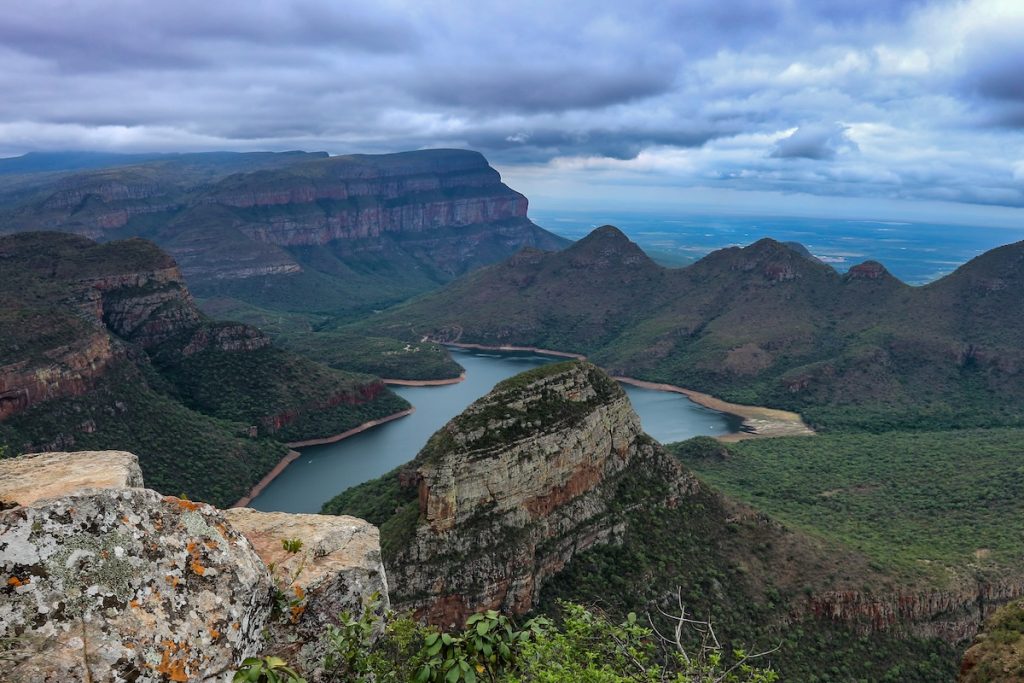
Blyde River Canyon in Mpumalanga is one of the largest canyons on Earth and arguably one of the most beautiful. This natural wonder features spectacular geological formations, including the Three Rondavels and Bourke’s Luck Potholes, and offers breathtaking panoramic views of the Drakensberg escarpment.
The area is a paradise for nature lovers and outdoor enthusiasts, with opportunities for hiking, bird watching, and photography. The viewpoints along the Panorama Route, such as God’s Window and the Pinnacle, offer stunning vistas of the canyon and the lush Lowveld below.
The Blyde River Canyon Nature Reserve is also home to a diverse range of flora and fauna, including several endangered species.
Know Before You Go:
Best Time to Visit: The dry winter months (May to August) offer clear skies and pleasant temperatures.
Getting There: Part of the Panorama Route, accessible by car.
Activities: Hiking, boat trips on the Blyde Dam, and scenic drives.
Facilities: Various lodges, restaurants, and picnic spots along the route.
Accessibility: Viewpoints and facilities vary in accessibility; some are wheelchair friendly.
Cape of Good Hope
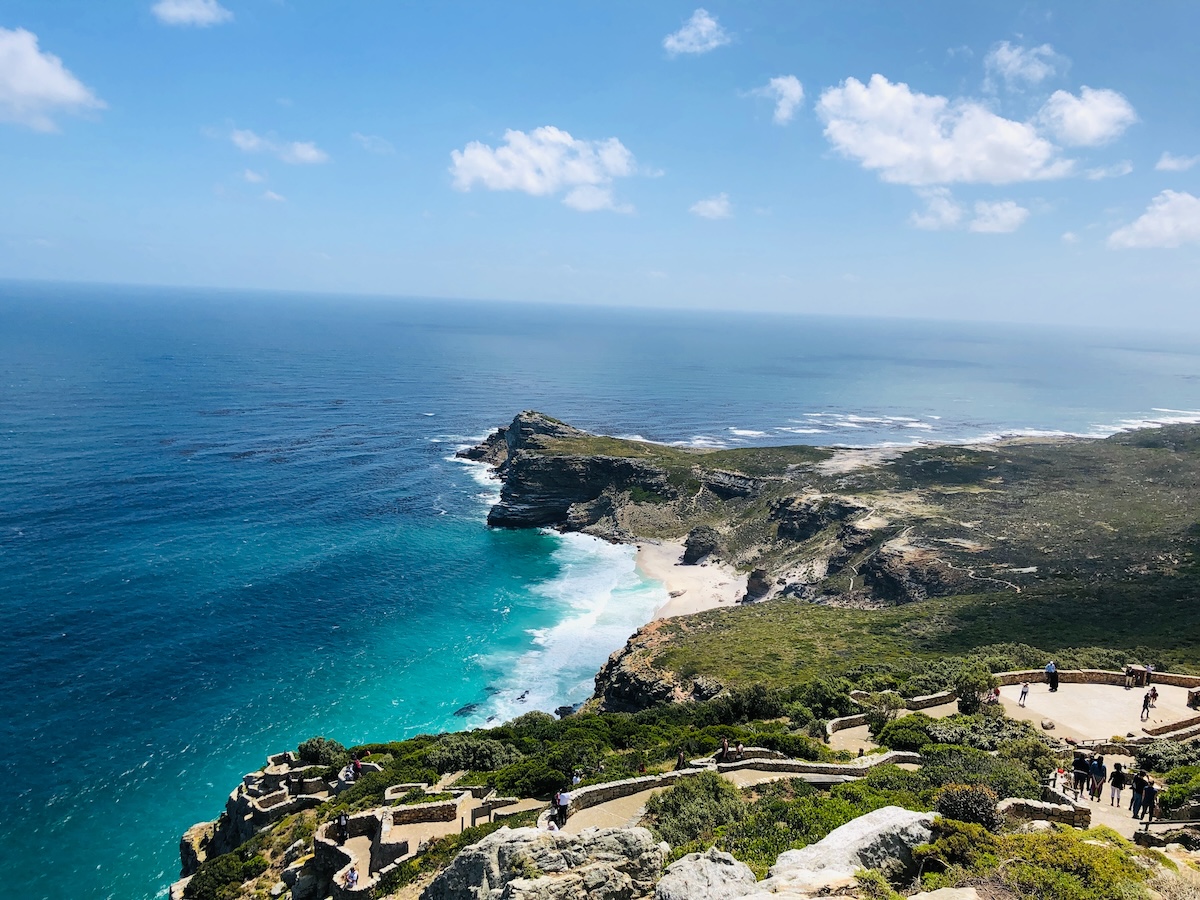
The Cape of Good Hope, positioned at the tip of the Cape Peninsula in South Africa, is a landmark steeped in history and enveloped in natural beauty.
Often mistakenly believed to be the southernmost point of Africa (a title that actually belongs to Cape Agulhas), it remains one of the most significant and picturesque tourist attractions in South Africa. The Cape is renowned for its stunning ocean vistas, dramatic cliffs, and diverse flora and fauna, forming part of the Table Mountain National Park.
Visitors to the Cape of Good Hope are greeted with a rugged and unspoiled landscape, where the Atlantic and Indian Oceans converge in a spectacular display of nature’s power. The area is a haven for wildlife enthusiasts, offering sightings of baboons, ostriches, and a variety of bird species. The famous signpost at the Cape marks a bucket-list photo opportunity for tourists who want to capture this famous landmark of South Africa.
A short drive or a hike away is the Cape Point Lighthouse, accessible by foot or via the Flying Dutchman Funicular. From here, you can soak in panoramic views of the ocean and surrounding cliffs. The Cape of Good Hope is not just a geographic landmark; it’s a symbol of hope, adventure, and the enduring allure of the sea.
Know Before You Go:
Best Time to Visit: Spring (August to October) for wildflower blooms; summer (November to February) for warmer weather.
Getting There: Self-drive or join a guided tour from Cape Town.
Entrance Fee: There are entrance fees for the Cape Point section of the Table Mountain National Park:
- Standard Entry for Adults: R376
- Standard Entry for Children: R188
For SADC (Southern African Development Community) nationals, the fees are:
- Adults: R188
- Children: R94
Facilities: Restaurants, curio shops, and restrooms are available at Cape Point.
Hiking: Numerous hiking trails offer varying degrees of difficulty.
Wildlife Caution: Baboons are common; do not feed them and keep a safe distance.
Weather: The weather can be changeable; bring layers and sunscreen.
Accessibility: The main areas and viewpoints are wheelchair accessible.
Cango Caves
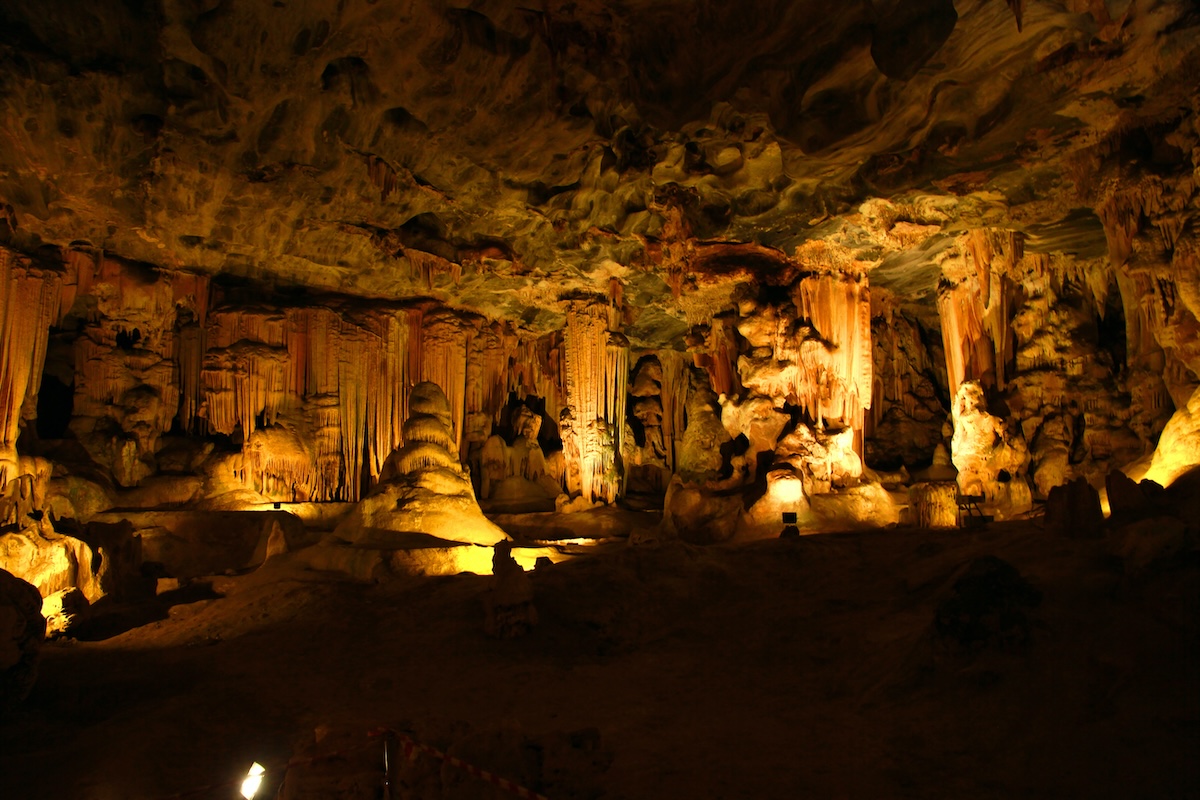
The Cango Caves, situated in the Swartberg Mountains near Oudtshoorn in the Western Cape, are an ancient wonder of limestone formations and one of South Africa’s most spectacular natural sights. These extensive cave systems are estimated to be over a million years old and consist of a series of chambers and tunnels adorned with vast halls and towering formations.
Visitors can choose between the Standard Tour, suitable for most visitors, which takes you through the grand halls and massive formations, and the Adventure Tour, which goes deeper into the caves through narrow passages. The caves are beautifully illuminated, highlighting their natural beauty and the intricacies of the stalactites and stalagmites.
Know Before You Go:
Best Time to Visit: Open year-round, but quieter outside of school holidays.
Getting There: Easily accessible by car from Oudtshoorn.
Tickets: Advance booking for the tours is recommended, especially during peak season.
Facilities: A restaurant and gift shop are available at the entrance.
Clothing: Wear comfortable shoes and warm clothing as the caves are cool.
Accessibility: The Standard Tour is accessible, but the Adventure Tour is not suitable for those with mobility issues.
Kruger National Park
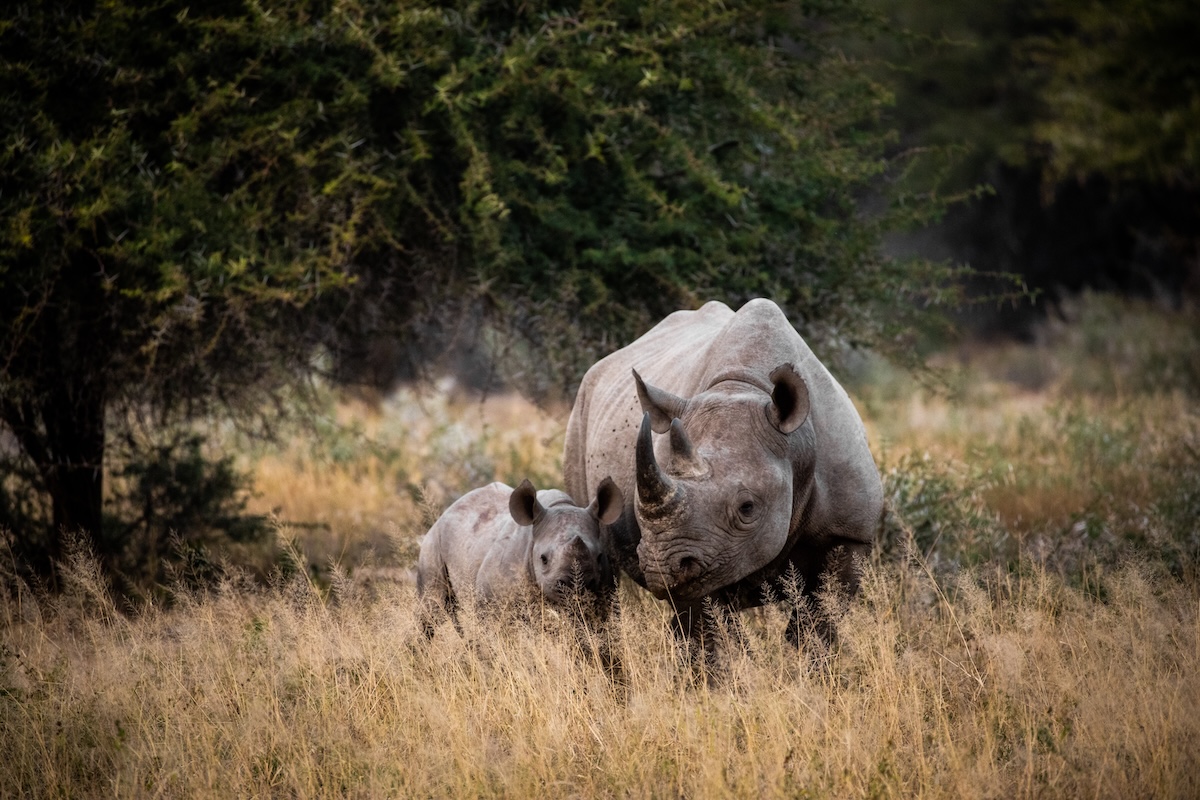
Kruger National Park, one of Africa’s largest and most famous game reserves, is a premier destination for wildlife and nature enthusiasts.
Spanning nearly 20,000 square kilometers across the provinces of Mpumalanga and Limpopo, it offers one of the finest wildlife viewing experiences in the world. The park is home to a remarkable diversity of life, including the iconic Big Five: elephants, lions, rhinos, leopards, and buffaloes.
Visitors to Kruger National Park can embark on self-driven safaris or guided game drives, providing opportunities to observe wildlife in their natural habitat. The park also offers walking safaris, night drives, and birdwatching tours. Accommodations range from basic campsites to luxury lodges, catering to all preferences.
Know Before You Go:
Best Time to Visit: The dry winter months (May to September) for the best wildlife viewing.
Getting There: Accessible by car from major cities or by flights to nearby airports.
Accommodation: Wide range of options; booking in advance is recommended.
Facilities: Rest camps with restaurants, shops, and fuel stations.
Safety: Adhere to park rules, especially regarding wildlife interactions.
Malaria Precaution: The park is in a malaria zone; take necessary precautions.
Garden Route
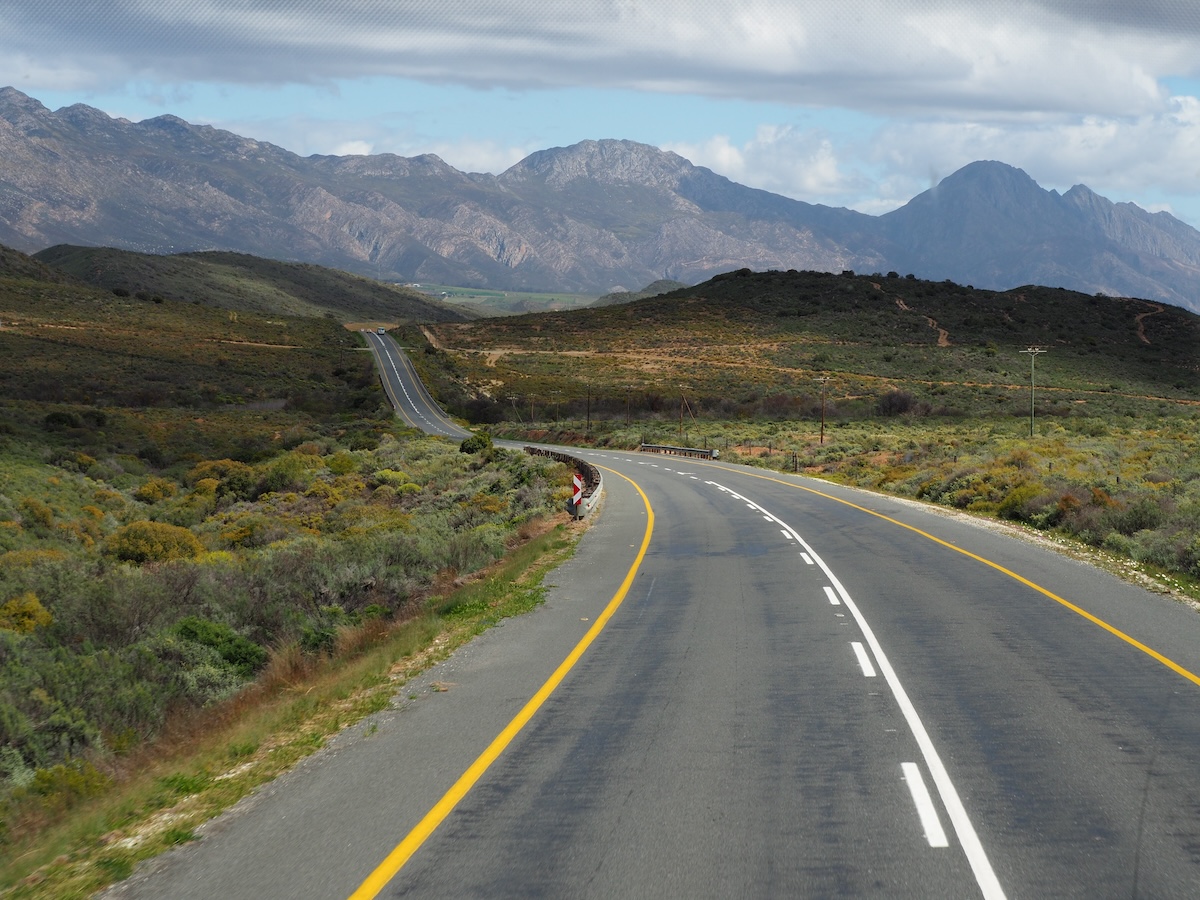
The Garden Route is a stunning stretch of coastline in South Africa, renowned for its natural beauty, diverse landscapes, and mild climate. Extending from Mossel Bay in the Western Cape to the Storms River in the Eastern Cape, this scenic route is a paradise for nature lovers, offering lush forests, pristine beaches, and charming towns.
Activities along the Garden Route include hiking in the Tsitsikamma Forest, exploring the Cango Caves, whale watching in Hermanus, and bungee jumping at Bloukrans Bridge. The route also passes through picturesque towns like Knysna, Plettenberg Bay, and Oudtshoorn, each with its unique attractions.
Know Before You Go:
Best Time to Visit: Pleasant year-round; peak season is during the summer months (November to February).
Getting There: Most start from Cape Town or Port Elizabeth, traveling by car.
Activities: Wide range of outdoor activities, including hiking, water sports, and wildlife viewing.
Accommodation: Variety of options from luxury resorts to cozy B&Bs.
Driving: The route is well-signposted and offers easy driving, but be mindful of winding roads in some sections.
Drakensberg Mountains
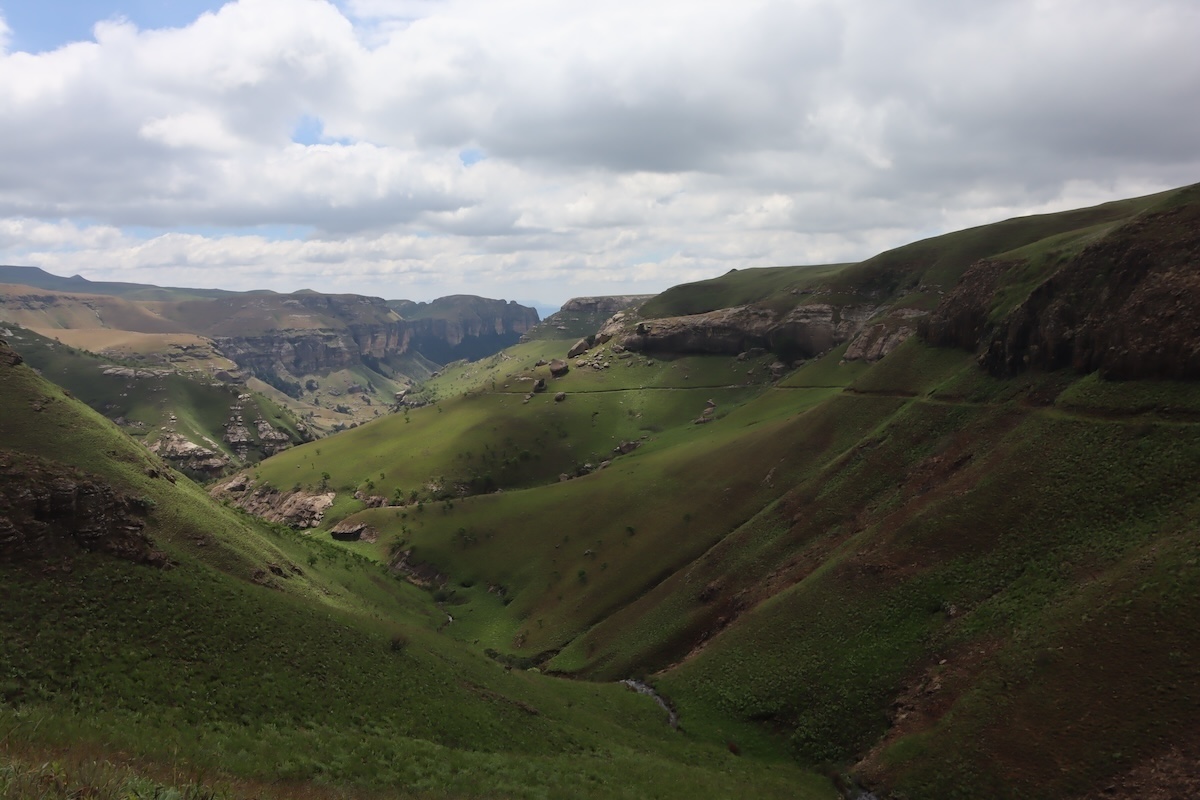
The Drakensberg Mountains, part of the Great Escarpment in South Africa, offer some of the country’s most awe-inspiring landscapes. This mountain range, with its highest peaks over 3,000 meters, is a haven for hikers, climbers, and nature enthusiasts and it’s one of the few places in Africa where it snows.
The area is also known for its rich biodiversity and is a UNESCO World Heritage site due to its exceptional natural beauty and the presence of ancient rock art by the San people, this famous South African landmark is also shared with neighboring Lesotho.
Activities in the Drakensberg include hiking trails ranging from easy walks to challenging climbs, bird watching, horse riding, and visiting San rock art sites. The mountains are also home to the Drakensberg Amphitheatre, a breathtaking cliff face and one of the most impressive geological features in South Africa.
Know Before You Go:
Best Time to Visit: Ideal in the autumn (April to May) and spring (September to November) months.
Getting There: Accessible by car; the main gateway towns are Underberg and Winterton.
Activities: Hiking, rock climbing, bird watching, and cultural tours to view rock art.
Accommodation: Range of options including lodges, guesthouses, and camping sites.
Weather: Weather can be unpredictable; pack accordingly.
Tsitsikamma National Park
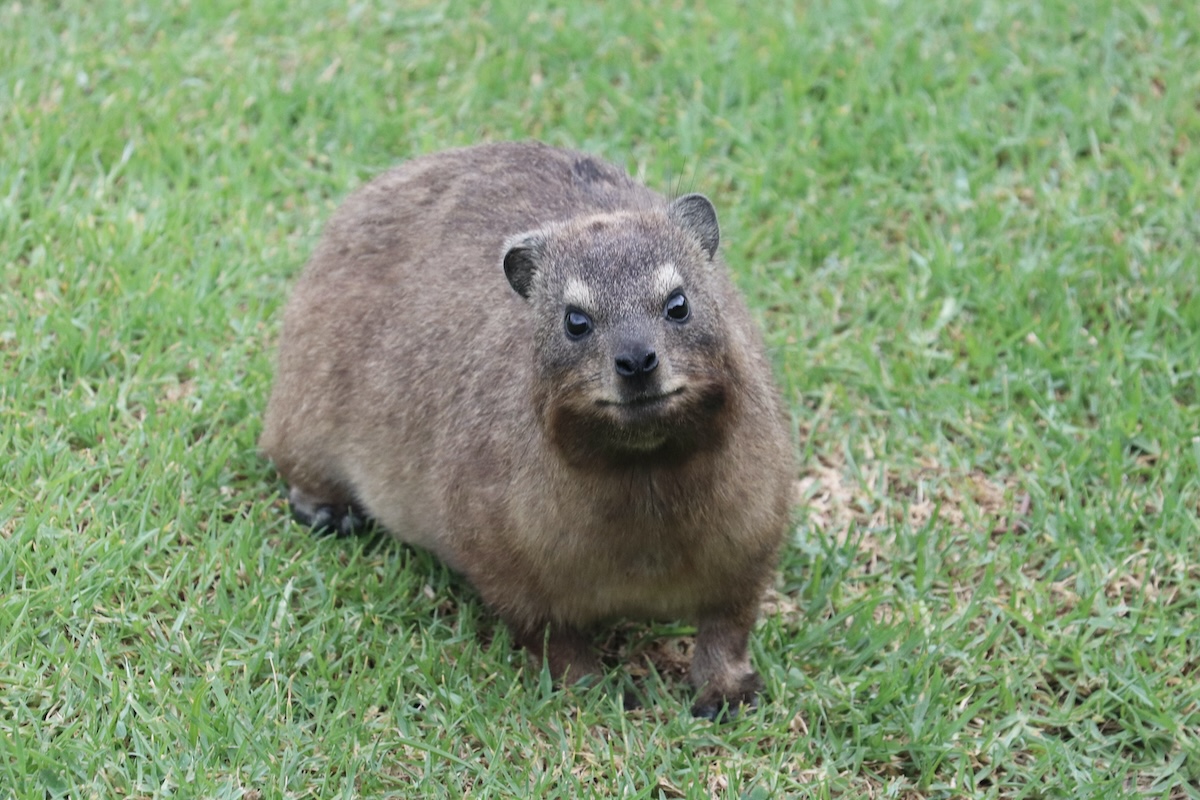
Tsitsikamma National Park, a coastal reserve situated in the heart of the Garden Route, is a haven for adventure seekers and nature lovers. Renowned for its lush indigenous forests, dramatic coastline, and the Storms River mouth, the park offers a unique blend of marine and forest ecosystems.
It’s part of the larger Garden Route National Park and is a key conservation area for various flora and fauna.
The park is famous for the Otter Trail, one of South Africa’s most popular hiking trails, offering stunning views and challenging terrain. Other activities include treetop canopy tours, snorkeling, scuba diving, and boat trips. The suspension bridge over the Storms River mouth is a must-visit spot for its breathtaking views.
Know Before You Go:
Best Time to Visit: Pleasant year-round, with spring and autumn offering the best weather for hiking.
Getting There: Accessible by car, located along the Garden Route.
Activities: Hiking, water sports, canopy tours, and bird watching.
Facilities: Rest camps, restaurants, and picnic sites are available.
Accommodation: Options range from campsites to forest cabins.
God’s Window
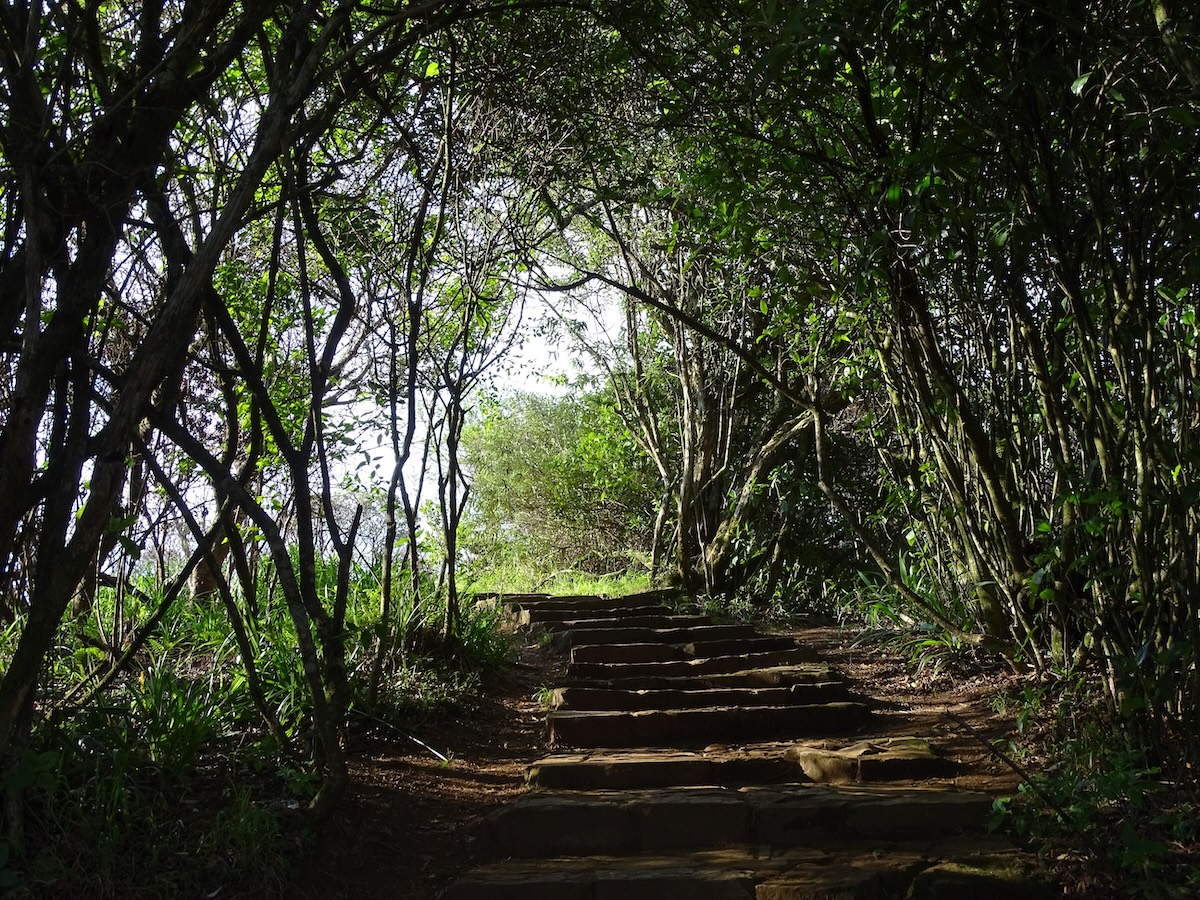
God’s Window, located on the Drakensberg escarpment in Mpumalanga, is a panoramic viewpoint offering some of the most spectacular views in South Africa. As part of the renowned Panorama Route, it provides a vista that stretches over lush forests and rugged cliffs, with a view that seemingly extends to infinity, hence the name “God’s Window.”
Visitors to God’s Window can enjoy various lookout points, each offering a unique perspective over the Lowveld and beyond. The area is surrounded by lush rainforest, with walking trails leading to viewpoints and waterfalls. The natural beauty of this spot makes it a photographer’s and nature lover’s paradise.
Know Before You Go:
Best Time to Visit: Clear days provide the best views; the dry winter months are ideal.
Getting There: Part of the Panorama Route, accessible by car.
Facilities: Basic amenities available; more facilities in nearby towns.
Hiking: Walking trails suitable for various fitness levels.
Accessibility: Some viewpoints are accessible, but paths can be steep and uneven.
Augrabies Falls National Park
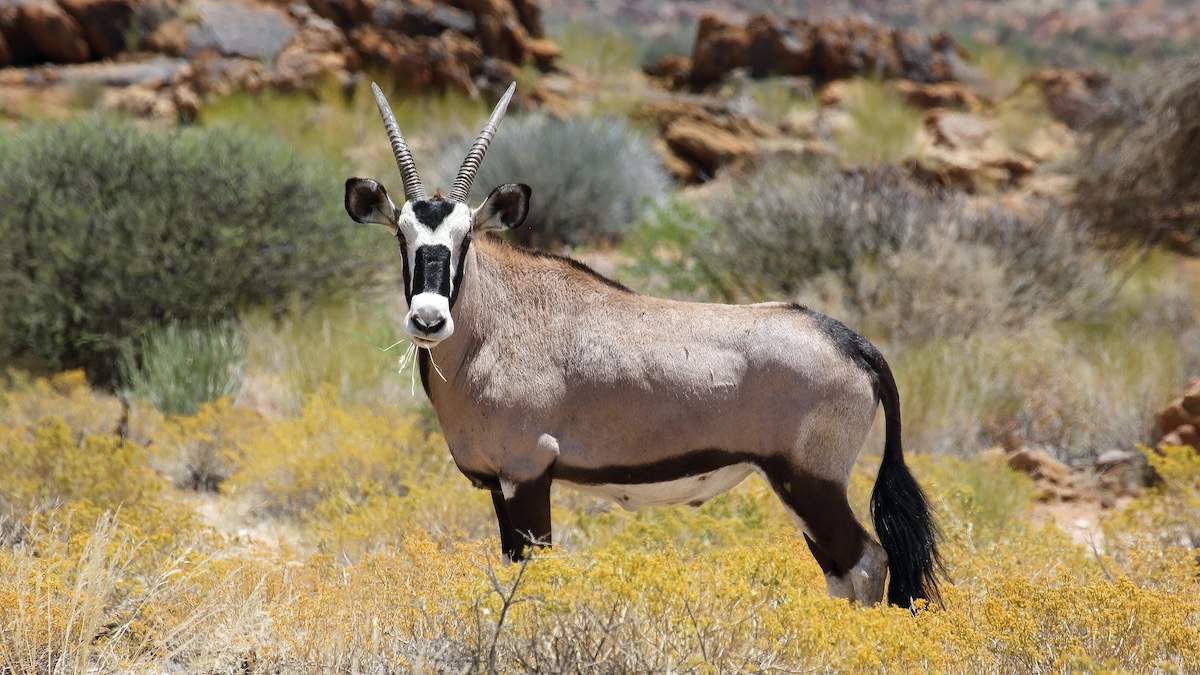
Augrabies Falls National Park, located in the Northern Cape, is home to the stunning Augrabies Falls, where the Orange River plunges into a deep gorge, creating a spectacular sight. The park encompasses an area of arid landscape, characterized by rugged terrain and unique rock formations, with the waterfall as its centerpiece.
The park offers a variety of activities, including game drives, where visitors can spot diverse wildlife, and several hiking trails, such as the Dassie and Klipspringer trails. The park is also a popular spot for bird watching and stargazing, with its clear night skies.
Know Before You Go:
Best Time to Visit: Cooler months (May to September) are ideal for hiking and wildlife viewing.
Getting There: Located about 120 km from Upington, accessible by car.
Activities: Game viewing, hiking, bird watching, and photography.
Facilities: A rest camp with chalets, camping sites, a restaurant, and a shop.
Viewpoints: Several viewpoints around the falls offer magnificent views.
Karoo National Park
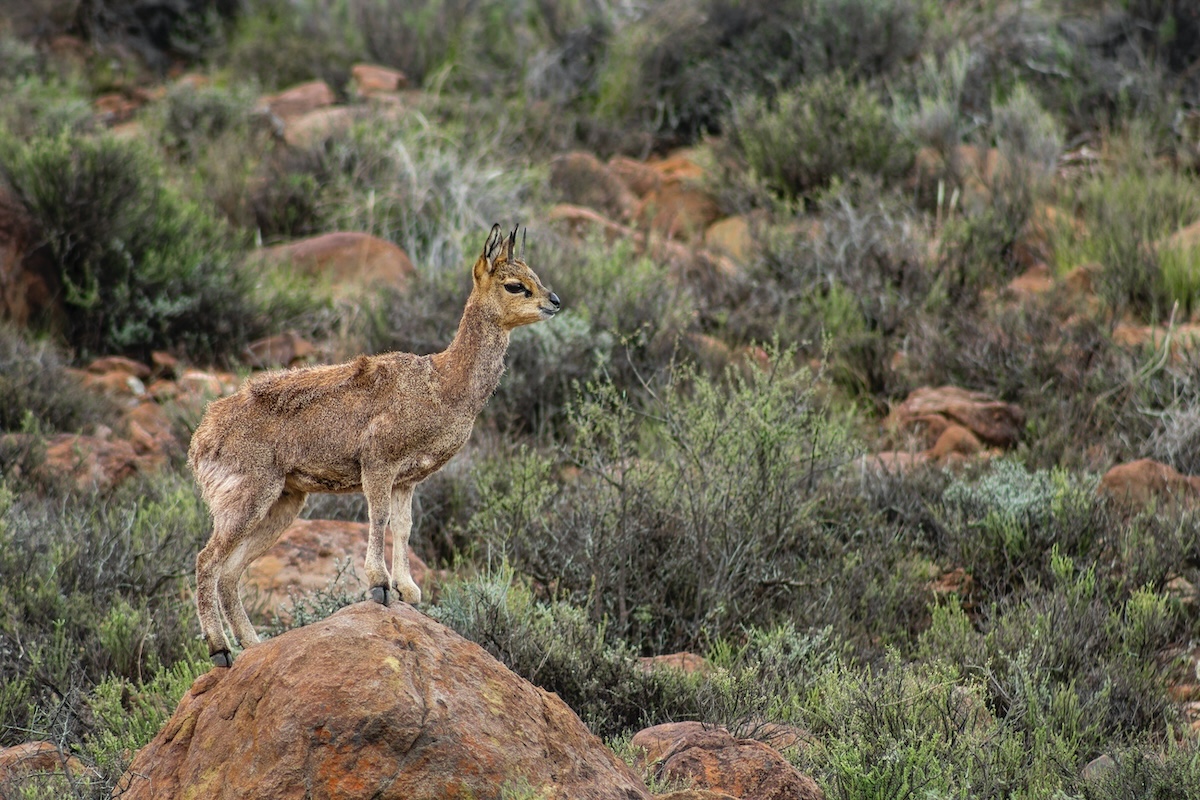
Karoo National Park, located in the heart of the Great Karoo region, is a showcase of the unique beauty and biodiversity of this semi-desert landscape. Renowned for its stark, rugged scenery, the park features vast plains, towering mountains, and a remarkable array of wildlife adapted to the arid environment.
Karoo plays a crucial role in the conservation of endemic species, including the Cape Mountain Zebra and the Riverine Rabbit, one of the world’s most endangered mammals.
The park offers a glimpse into prehistoric times, with significant fossil finds and a dedicated fossil trail that educates visitors about the region’s ancient past. The park’s cultural heritage is also highlighted through historical sites, including Bushman rock art. Visitors can enjoy game drives, guided walks, and bird watching, with the park being home to a variety of bird species.
Know Before You Go:
Best Time to Visit: Pleasant throughout the year; spring (August to October) is ideal for wildflowers.
Getting There: Located near Beaufort West, accessible by car.
Activities: Game drives, bird watching, and hiking trails.
Facilities: Rest camp with accommodation, a restaurant, and a shop.
Stargazing: The clear night skies are perfect for astronomy enthusiasts.
Boulders Beach
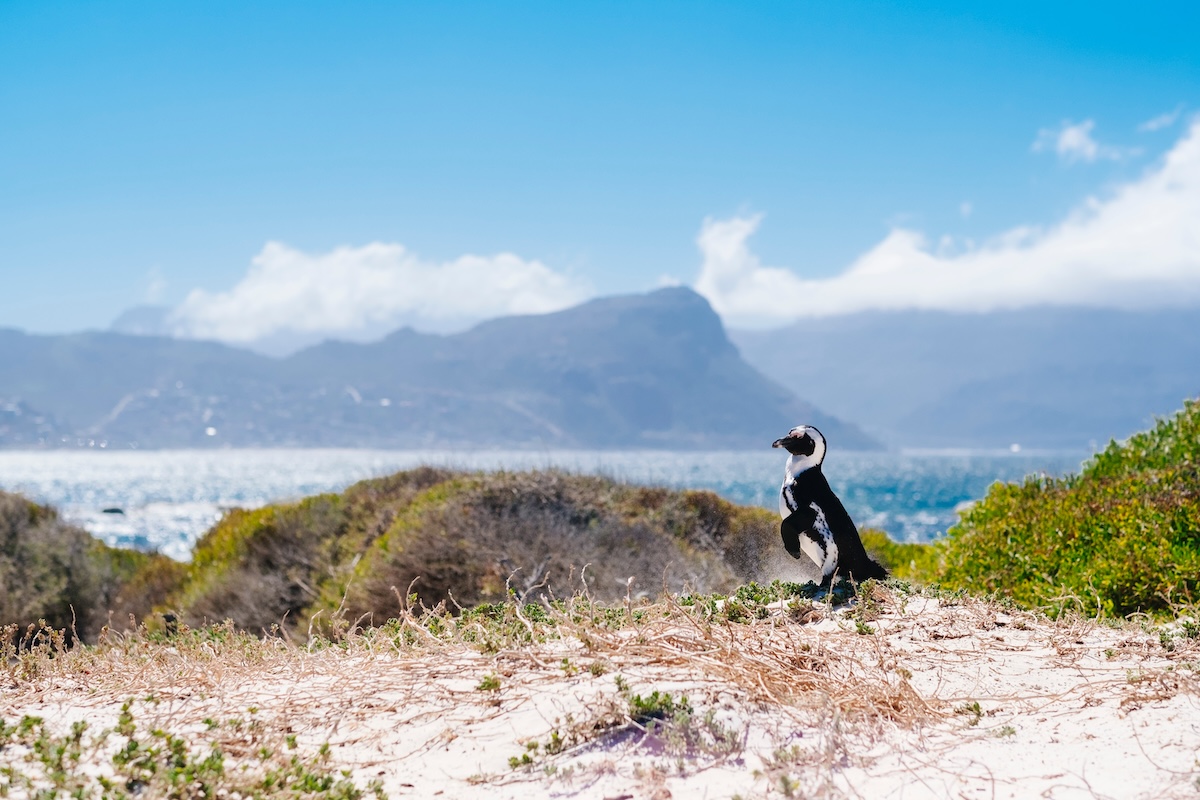
Boulders Beach, near Cape Town, is famous for its resident colony of African penguins. Located in the sheltered coves of Simon’s Town, the beach is part of the Table Mountain National Park Marine Protected Area. The picturesque setting, with its soft white sand and granite boulders, provides a unique backdrop for viewing these charismatic birds.
Visitors to Boulders Beach can observe the penguins in their natural habitat from the boardwalks, which are designed to protect both the birds and their nesting sites. Swimming is allowed at nearby Foxy Beach, offering a rare opportunity to share the water with penguins. The beach is not just a tourist attraction but also plays a critical role in penguin conservation.
Know Before You Go:
Best Time to Visit: Year-round; penguin sightings are common throughout the year.
Getting There: Located in Simon’s Town, accessible by car or train from Cape Town.
Entrance Fee: A conservation fee is charged as it’s part of a national park. For international visitors, the standard conservation fee is R176 per adult and R88 per child per day.
Facilities: Basic amenities like restrooms and a small café are available.
Hluhluwe–Imfolozi Park
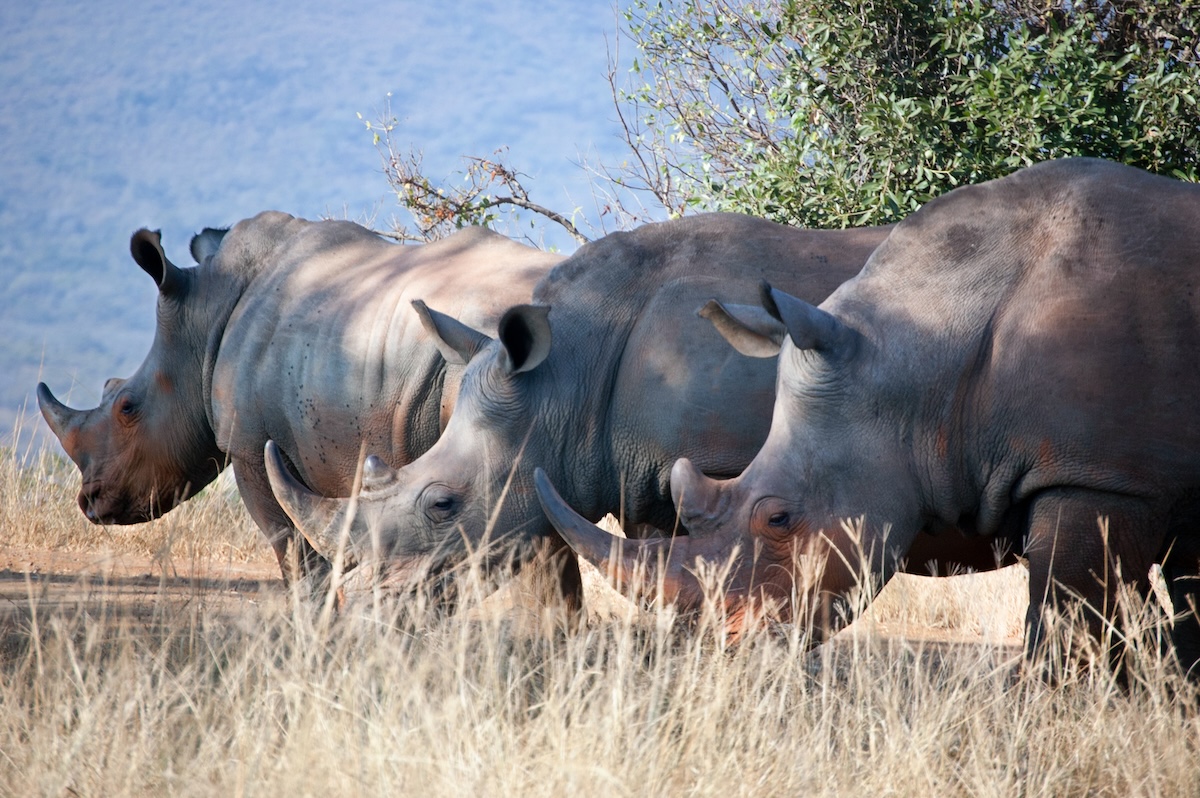
Hluhluwe–Imfolozi Park in KwaZulu-Natal is the oldest nature reserve in Africa and a cornerstone in the conservation of the white rhino, which was brought back from the brink of extinction through operation “Rhino Save.” This park is not only a wildlife haven but also a symbol of successful conservation efforts.
The rolling hills and diverse habitats within the park support a wide range of African wildlife, including the Big Five.
The park’s rich history is also tied to Zulu culture, as it was originally a royal hunting ground for the Zulu kingdom. Guided walks and game drives offer chances to see the abundant wildlife, and the park’s efforts in conservation and community involvement are evident throughout.
Know Before You Go:
Best Time to Visit: The dry winter months (May to October) for wildlife viewing.
Getting There: Located north of Durban, accessible by car.
Activities: Game drives, guided walks, and bird watching.
Facilities: Rest camps and lodges with various accommodation options.
Richtersveld Transfrontier Park
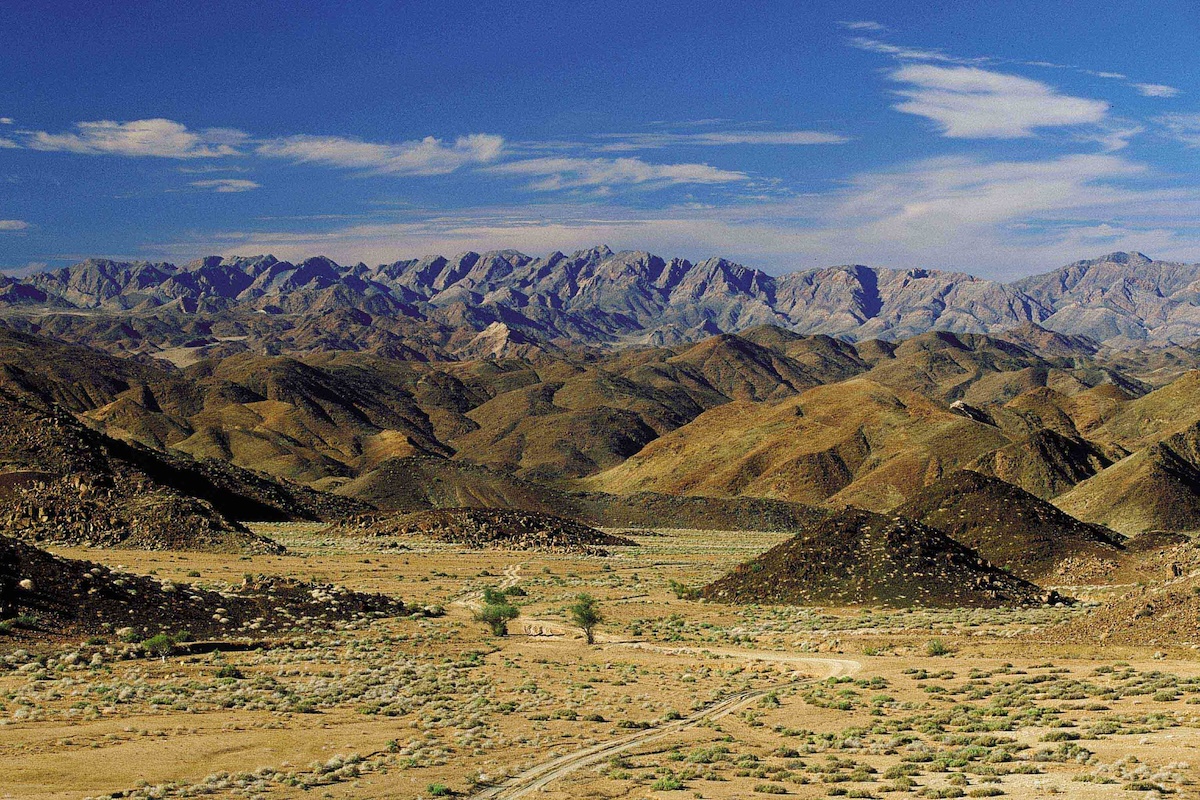
Richtersveld Transfrontier Park, located in the northwestern corner of South Africa, extending into Namibia, is a unique and starkly beautiful desert landscape. This UNESCO World Heritage Site is one of the few areas where the Nama people still practice their traditional semi-nomadic way of life, known as transhumance, so the cultural significance of the area is as profound as its natural beauty.
The park has rugged mountains, dry riverbeds, and a surprising diversity of desert-adapted flora and fauna. It’s a haven for adventurers and those seeking a truly off-the-beaten-path experience. Activities include 4×4 trails, guided hikes, and bird watching. The park’s night skies are among the clearest in the world, offering exceptional stargazing opportunities.
Know Before You Go:
Best Time to Visit: Winter months (May to September) for milder temperatures.
Getting There: Remote location; best accessed by 4×4 vehicles.
Activities: 4×4 trails, hiking, and cultural experiences.
Facilities: Basic; camping is the primary accommodation option.
Cultural Respect: Visitors are encouraged to respect the traditional practices of the Nama people.
From the iconic Table Mountain, a hiker’s dream with its panoramic views, to the historical depths of Robben Island, each landmark in South Africa tells a story of resilience, beauty, and diversity.
As we wrap up our journey through South Africa’s most iconic places, it’s clear to see why so many tourists ache for a South Africa stamp on their passports with so many natural and manmade landmarks in South Africa to choose from.

